“Battle” of the Atlantic (1940-44)
We will see why, and how the battle turned to be almost a winning factor for the axis, the main concern for the allies, more than the war on land, which was carried out by the Soviet Union by then in 1942, when this battle reached its zenith. The next year, the allies slowly but surely turned the tide of the battle. The last year U-Boats still risked their way in to the Atlantic was 1944. The next year, there were however great plans to reverse the tide, notably counting on “miracle weapons” such as the Type XXI.
Prologue: Comparison with the first “battle of the Atlantic”
It was not a simply “copy-paste, repeat” of what happened in WW1, due to two factors: The scale, both in time and number of ships involved, is several fold above. And second, technology made ww1 tactics soon obsolete. The entente was not barely winning in WW1 at sea by 1918 whereas German U-Boats were virtually doomed at each mission by 1944. The famous “Battle of the Atlantic” is not one in the classic sense but of course a theatre of vital maritime operation corresponding to the supply of the British metropolis by its precious convoys coming from America (North, South, Canada, and roads to Africa).
In fact a huge area was tirelessly patrolled for the duration of the war, thousands of escorts on the side of the allies, and a thousand submersibles on the German side. It was the reissue, and this from the start of the war in September 1939, of the gradual sub warfare already undertaken by Von Tirpitz and approved by William II. However, it is advisable to study the various strategies implemented by the axis and the allies during this episode of the second world war, stakes, means, figures, before making a general assessment.
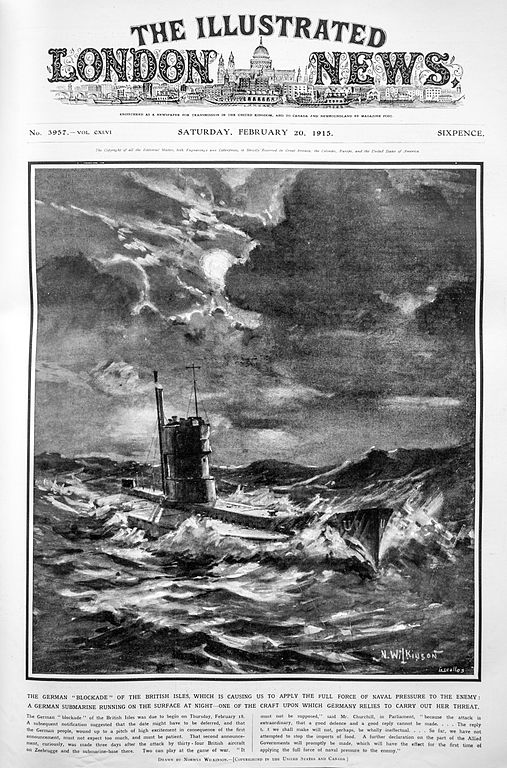
During the great war, the Germans had at their disposal quality submersibles, and a powerful surface fleet, claiming rightfully to challenge the overwhelming superiority of the Royal Navy acquired in the past century. But the Germans were late in the game. The U1 was operational in 1906, and around 400 models would follow. During the great war they would inflict appalling losses to the entente, in both military and civilian tonnage. Such trauma pushed the allies to ban forever for the Germans the use and construction of submarines, in a well defined clause of the Treaty of Versailles. This was assorted by inspections. At the same time war prizes were well studied by entente countries, eager to take on the best aspects thy could find on their own model, or have them in service.
The first battle of the Alantic became a war on trade, something already practiced since the antiquity, but with modern means. The Hochseeflotte, especially after the battle of Jutland lost the will to confront head on the Royal Navy, and this caused Great Britain to reinforced its blockade on Germany, so much so that submarine warfare became unrestricted again, despite the sinking of the Lusitania a year before. Ultimately this formidable fleet, almost intact, was led to a humiliating scuttling at Scapa Flow following the capitulation. Hitler of course never forgot this, and despite the Kriegsmarine from 1933 had a relatively low priority while submarine development was maintained in secret, the Z-plan was a very ambitious one, after the Anglo-German treaty of 1935. Many exports designs from the Hague kept engineers’s skills sharp for submarines, but to not anger the west too much, early production in 1936-39 focused on coastal models, defensive by nature.
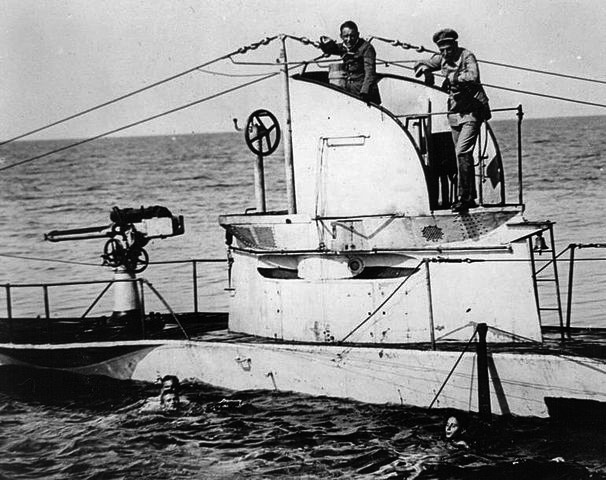
U-27, sunk 19 August 1915
ASW Measures in WWI
During this first battle of the Atlantic and as early as 1914, there were talk of engaging U-Bootes in a hunt for British trade with their colonies. For the first two years, the entente had no response to submersibles (which replaced torpedo boats as the most feared and “sneaky” weapon). Only from 1916 the entente, in addition to reactivating the old convoy system, tried some primitive acoustic devices and already worked on ASW grenades. But gun was the main weapon to deal with U-Boats, facilitated by the fact the latter spent most of the their time cruising on surface. Being submerged was always the exception, not the rule.
The entente gathered merchant ships in single convoys, not without resistance from strong-headed captains and companies, and escorted them, first by destroyers, needed in the Grand Fleet already. They turned on lighter, slower sloops and frigates, armed and equipped from 1917, while camouflage and decoy tactics were introduced to disrupt shapes, speeds and deceive U-Boat captains. It worked. Against such “disloyal” weapon such as the U-Boat, the British admiralty did not shy at implementing equally sneaky tactics, such as the Q-Ships, basically “trap boats”, wolves disguises as sheeps (Military grade vessels, well armed, but masqueraded as cargo ships with their guns well hidden under masks). The concept was not lost by the Germans which also used the concept for their commerce raiders, in both wars (see later).
The technique was no different from German surface raiders of the time and blockade runners. On the other had, escorts sometimes just imitated the “three islands” shape while civilian yards turned trawlers or whalers into submersible hunters, re-establishing gradually a balance. However this was not the overwhelming ASW fleet of 1944, during the second battle of the Atlantic, far from it.
Camouflage
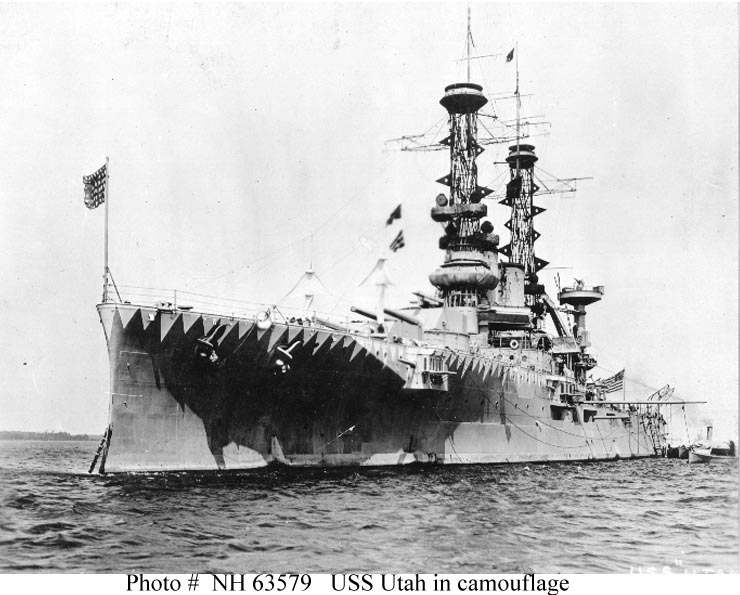
USS Utah testing a camouflage. In 1917, it was mandatory for civilian ships, and tested widely, but without clear standardization. This will came with WW2. Military ships were more rarely camouflaged, but they experimented patterns until the end of the war. Artists, Magicians and Showmen were recruited, whereas in WW2, the admiralty had taken this matter into its own hands and created a dedicated department with scientifical methods.
“Camouflage” until 1916 was not eve a thing. Warships were exclusively painted in an uniform livery of gray of different tones, while the classic civilian livery, inherited from sailing era and coal-loading practiced imposed a black hull with white and buff superstructures. By the end of the war, camouflage had become an inspiration for contemporary artists, cubist painters, soon called the “Razzle Dazzle”. but the principle was scientifical in its approach: Multiply effects of light and shadow, disrupt volumes, disguise a silhouette, speed and direction. In short, making it unintelligible to his human observer what type of ship he face, its speed and direction, since the latter dictated the angle of torpedo launch.
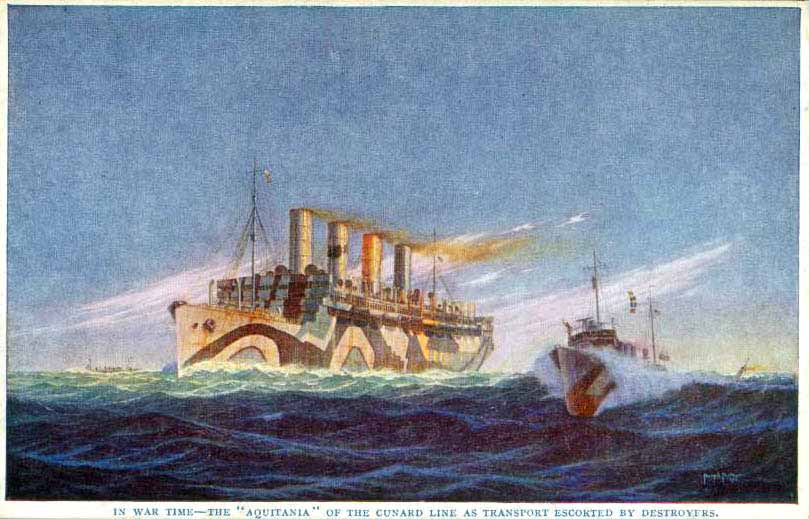
The Razzle Dazzle was especially applied on large ships, liners, due to their large volumes. In WW2, camouflage was generalized on military ships, this was not the case in the first battle of the Atlantic.
Aces and propaganda

U-Boat types in 1914-18. From all these types, the UC, UB were the most influential designs in the interwar. The famous Type VII was derived from the 1918 UB type.
If at first few U-Bootes were available, stunning successes enjoyed until 1916 made U-Boat captains heroes, a gift for propaganda in Germany. The best illustration remained the amazing score of top ace Commander Lothar Von Arnault de la Périère (French Huguenot descent) sinking some 231 vessels of all sizes and tonnage – civilians and military alike. This would remain the absolute submarine ace of all times. Both French and British old cruisers and battleships were often poorly protected below the waterline and suffered considerable losses in record time and the most impressive loss (a wakeup call for the admiralty) was the sinking of HMS Hogue, Cressy and Aboukir in short succession. Captains thought at first of a rogue mine, and stopped to rescue survivors, making a perfect stationary target. Hunting boards of U-Boats were impressive, the same captain scoring thirty more ships during his active career, with torpedo, cannon shells, or even explosive charges brought by the prize crew !
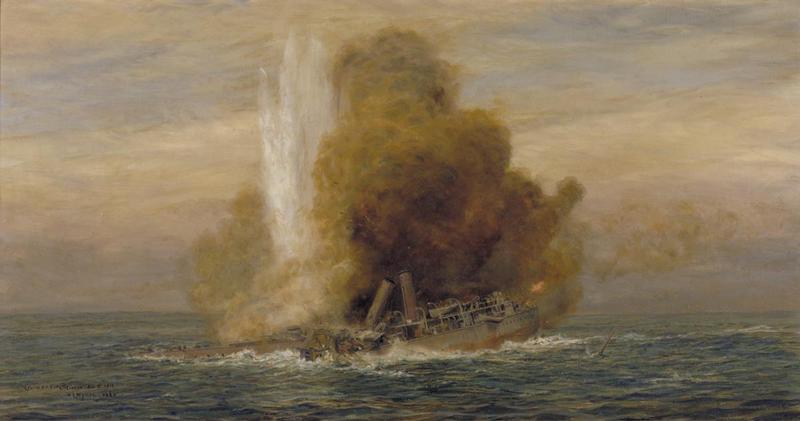
HMS Pathfinder sunk by U-21, 5 September 1914
The Lusitania and SW restrictions
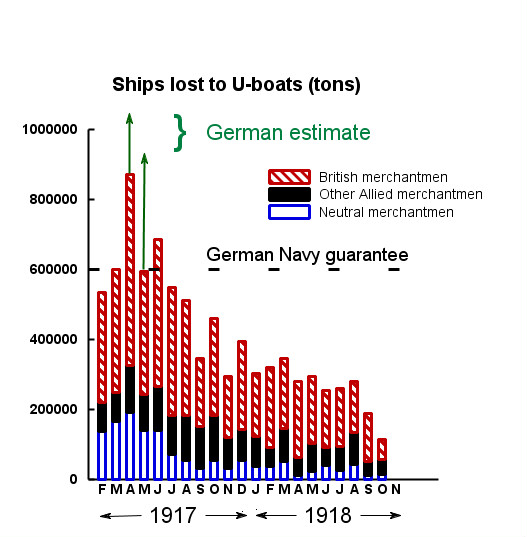
Tonnage losses in WW1
Propaganda was double edge however and the entente was quick on underlining the “barbarous” nature of sneaky U-Boats sending to the bottom civilian ships, with women and children on board. The most famous “coup” was the sinking of the Lusitania. From the moment when restrictions were lifted, neutral ships themselves could be sunk if suspected of carrying a military load intended for the entente.
A boarding party was sent at the beginning and the ship often sunk or scuttled, but in other case, sinking a civilian entente ship was considered right of suspected to carry weapons. Whereas German intelligence believed it was so or not, the liner was torpedoed without warning by Walther Schwieger in May 1915. This unleashed a torrent of propaganda against the “savage hun” so far so the Kaiser decided to impose restrictions again. It also caused a scandal in the USA as the liner carried US citizens. Despite the Kaiser’s official apology, this, combined with other revelations eventually caused Washington to declared war on Berlin in 1917.
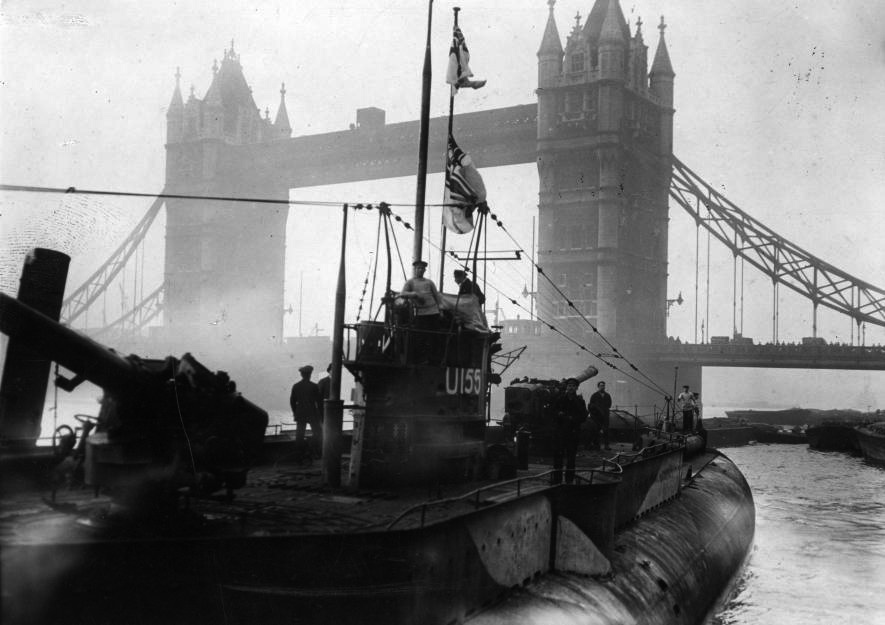
Immediately afterwards, British blockade became even more intense, seizing neutral ships suspecting to transport goods for Germany, a traffic that became meager and forced the Germans to carry out with blockade runners missions and even test the world’s first underwater cargo ship, SMS Deustchland, the largest submarine so far. The latter, unarmed, successfully traded with the US, but this was a far cry of what was needed and both the army and especially civilians started to flee shortages.
Because of this, industrial production of the entente far surpassed tone of Germany’s, and it was compounded from 1917 but the enormous industrial capacity of the USA, delivering at the end of the war more than 400 destroyers and nearly 800 submersible hunters, shifting the balance. In 1918, the industrial capacity of the Reich was mobilized to ficus of new types of submersibles, whereas the Kaiserliches Marine enjoyed little new construction. The nomenclature ranged from tiny coastal minelayers operating from Belgium to long range cruisers with heavy guns. None of these lessons were lost during the interwar, and although the entente banned submarines for Germany (therefore the threat of a second battle of the Atlantic), when Hitler came to power and restarted production of submersibles gradually for the Kriegsmarine, no one oppose him. However technological innovation was gradual and partial at best, and 1918 models such as the
1939: Prelude to the battle
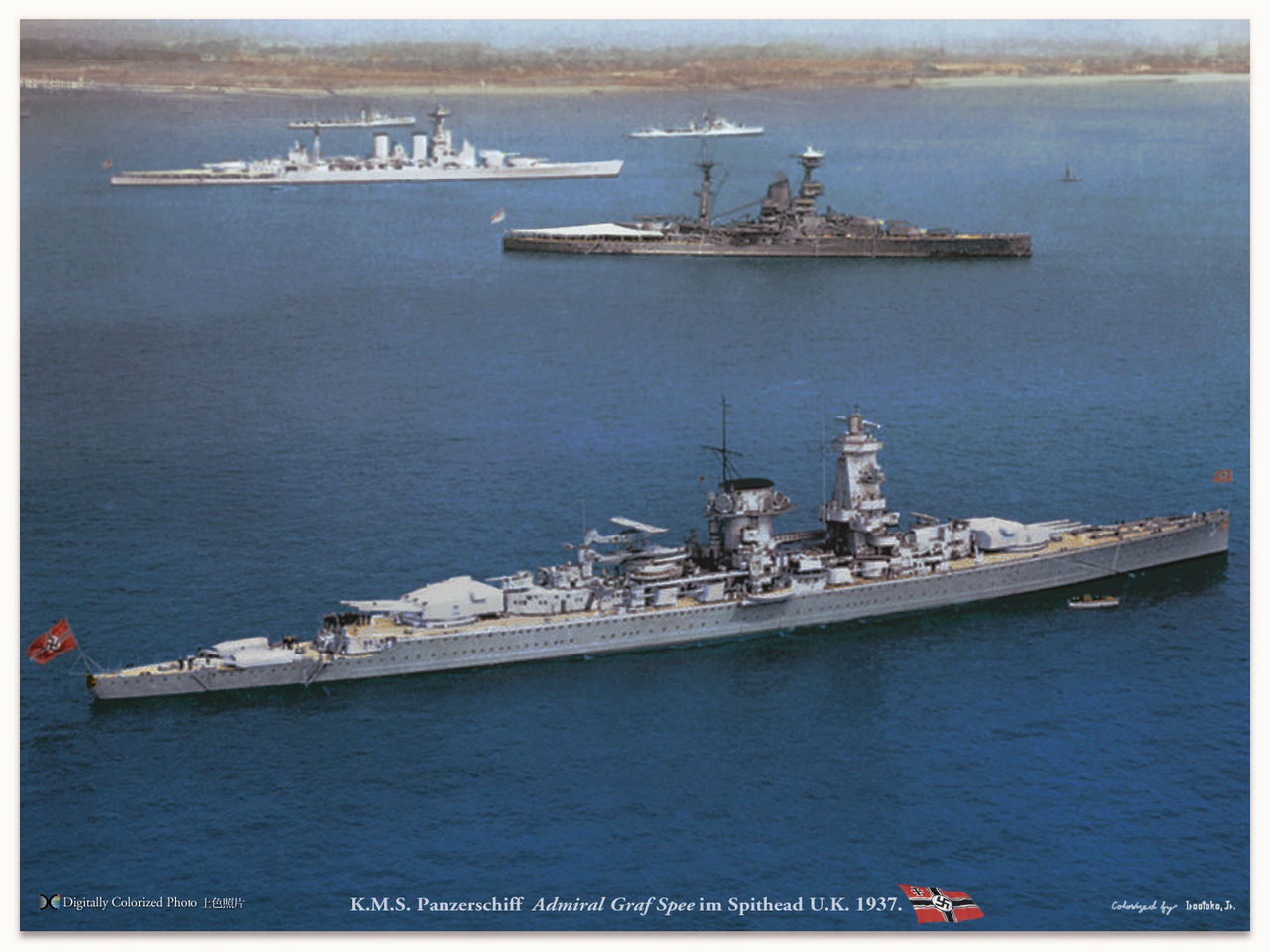
KMS Graf Spee before the war, participating in the Royal Spithead review in 1937. Surface raiders were thought to be at the forefront in 1939, but their result over a year were beyond expectations.
The Kriegsmarine did sent U-Boats in the Atlantic as soon as the war broke up. These were the U1-U2 for a start. In 8 October 1939, Prien famously sank the HMS Royal Oak in Scapa flow. But these were rarities. Surface raiders by then were considered the prime asset of the Kriegsmarine to disrupt commerce. Surface raiders also included proper warships of the Kriegsmarine. Indeed the war disrupted completely the naval staff, which were just started with the “Z-plan”, destined to carry the German Navy on par with the Royal Navy, an ambitious plan planned for 1946 at least.
It included massive battleships, Germany lacked completely in 1939. The three Deustchland class “pocket battleships” were Reichsmarine treaty-compliant compromises thought after to wage war on commerce, as were the following Scharnhorst class authorized after the London treaty and Anglo-German entente, which were very fast but to the cost of armament and protection.
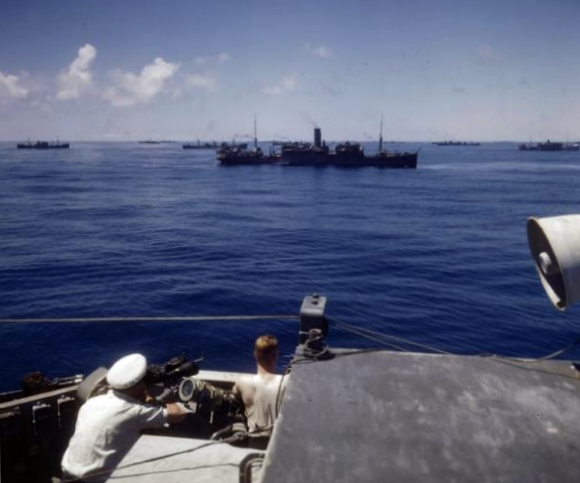
Convoy in the south atlantic
The action of the Graf Spee and the way it ended was a first disappointment for Hitler, which never really understood naval warfare. Armed Cargos used as commerce raiders were more successful. Indeed their most active and effective time was between 1939 and 1941, as together they manage to sink 140 ships, for a total of 700 000 GRT.
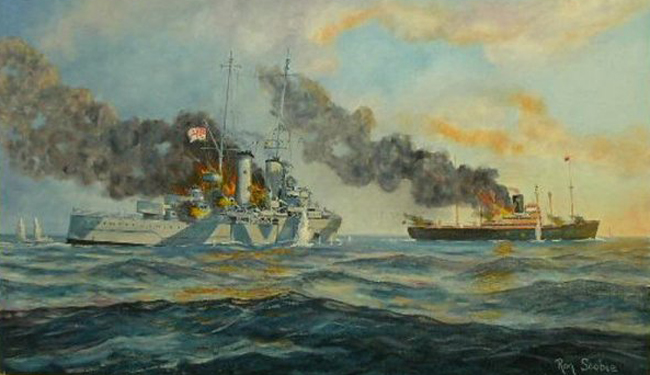
One of the most stunning duels of WW2 between one of these commerce raiders opposed KMS Kormoran and the Perth-class light cruiser HMAS Sydney: They blasted each other in such way both ships sank off Australia on November 19th 1941. A tragedy for the RAN as the cruiser sank with all hands and no clear explanation emerged as why she did so. Arguably, KMS Kormoran was armed with six vintage WW1 150 mm, the same as the more recent 6-in of the Sydney. There was no such battle in the Atlantic.
Kriegsmarine’s Performances in Norway also infuriated the Fuhrer, losses that can be difficult to replace, and the only operational sortie of KMS Bismarck in May 1941 ended in failure, despite sinking the Hood, flagship of the RN. From there the Raeder’s surface fleet definitely lost favour and construction programmes, already disrupted were bring to almost a standstill. Dönitz rule was coming. Until its loss in 1944, the second German true battleship of this war, KMS Tirpitz, spent most of its career in Norway as a deterrent for the Home fleet along the northern convoys route.
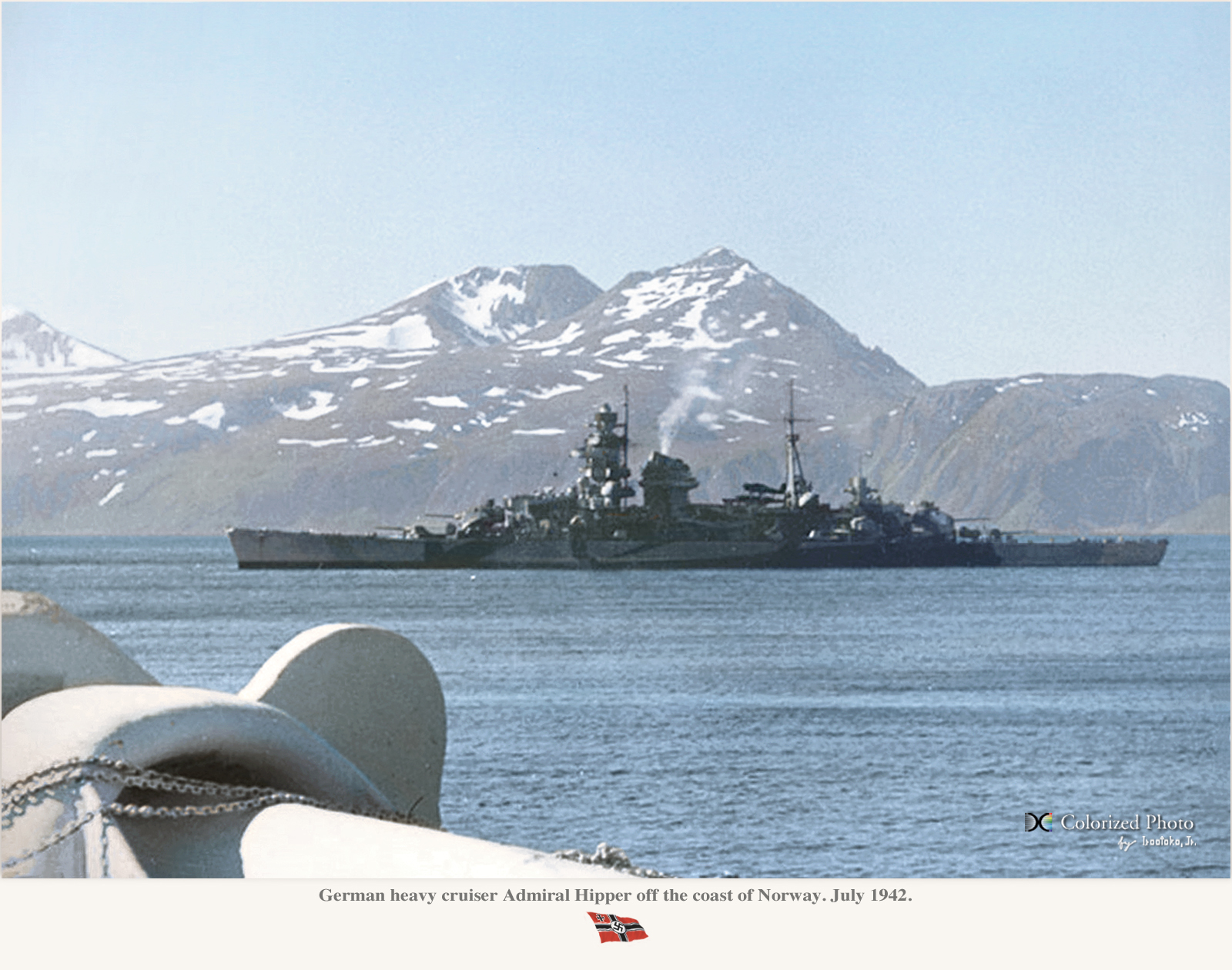
KMS Hipper in Norway, July 1942 – colorized by Irootoko jr.
After Raeder’s disgrace, Hitler under the active lobbying of Dönitz, turned his attention to U-Boot warfare in a model proposed by Dönitz which was modeled on that of 1917, unrestricted. After all, this was “total war”. Germany maintained its engineering skills by selling patent, designs and equipment, and in particular batteries and MAN diesels, to the world. The Hague in the Netherlands allowed them to avoid zealous inspections about submarine development in Germany. The Treaty of London implicitly lifted this ban and from 1936 anyway, the allies were no longer able to oppose Hitler. The first official Kriegsmarine U-Boats was accepted in service in 1936 and about 150 were in service in 1939, mostly inocuous-looking coastal defense types. The only two ocean-going ones (U1 class) were expected to be used as in 1916 in isolated cruises and without coordination.
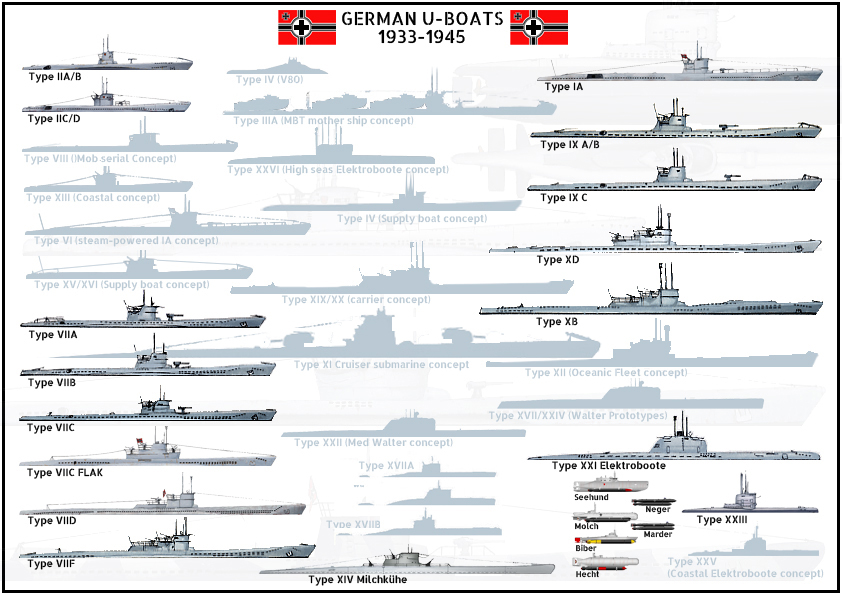
WW2 U-Boat types. Only the Type VII and IX were built in large numbers
In september 1939, as well as the system of the convoys was reactivated and an operation office and coordination was setup to provide the means of escorts (notably the western approach HQ), was created aside the admiralty of London. Just like at the start of the great war, captains risked their submersibles in individual exploits, like Gunther Prien, who by sinking the battleship Royal Oak, in the very heart of the sanctuary of the Royal Navy – Scapa Flow – inflicted a serious psychological blow to the British and a propaganda gift for Germany. Hitler feared the “old Lion” until the summer of 1940, at the eve of the Battle of Britain, still thinking to negotiate peace.
Allied measures against U-Bootes were already there, with ASW grenades and Y-guns. Magnetic mines laid by the Luftwaffe also quickly recorded spectacular successes. They were soon proved without effect by generalizing degaussing of ships. Nevertheless, by June 1940, 585,000 tons of shipping would been sent from the bottom.
Masterminds of the Battle of the Atlantic
Karl Dönitz
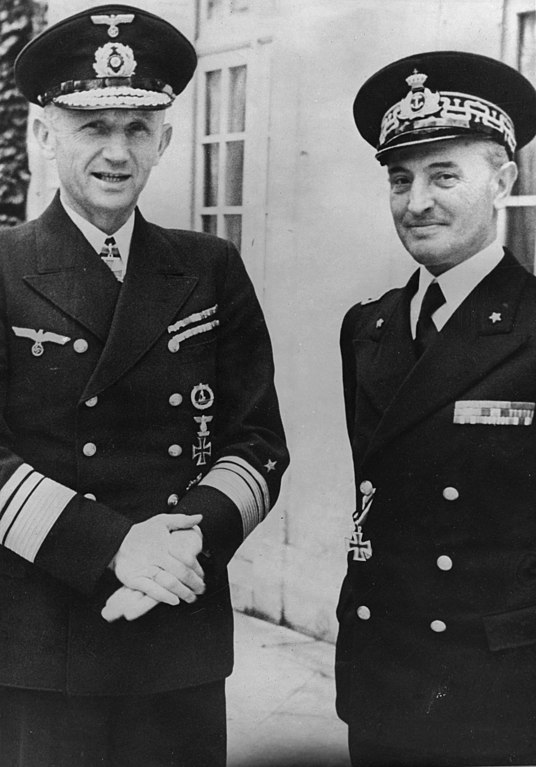
Karl Dönitz and his counterpart admiral Angelo Parona in front of his Lorient HQ circa 1941. Discussions about the implication of Italian submarines in the Atlantic campaign was indeed discussed and later a contingent of long range subs operated from Bordeaux. src https://audiovis.nac.gov.pl CC
Karl Dönitz (or Doenitz in modern German), was born on 16 September 1891 in Grünau near Berlin, to Anna Beyer and Emil Dönitz, an engineer. In 1910 he joined in the Kaiserliches Marine, having an interesting career in the black sea on the Turkish Cruiser Midilli, ex light cruiser SMS Breslau transferred to the Ottoman Navy. Tansferred in the submarine forces in March 1916, he became Oberleutnant zur See and later passed the submariner’s school at Flensburg-Mürwik, being promoted in 1917 as watch officer on U-39 and commander in UC-25 and later UB 38 in the Mediterranean. His sub was forced to surrender in October 1918 and he spent two years as a British POW.
His career went on in the Reichsmarine being promoted Kapitänleutnant of a torpedo boat in 1921, Korvettenkapitän in 1928 and Fregattenkapitän in 1934, in charge of KMS Emden. Under the new Kriegsmarine, he soon benefited from the Anglo-German Naval Agreement of 1935 which authorized submarines again under certain conditions, and was found commanding the U-boat flotilla Weddigen, comprising the U-7, U-8 and U-9. Later that year he was promoted Kapitän zur See. The paradox was at that time Dönitz doubted U-boat were suited for naval trade war due to their slow speed. He was critical of large subs and preferred smaller models, which was the case in 1936-39. By that time however he was concerned that only 26 U-Boats were in commission or under construction.
He would later voice his recommendation of the Type VII as the ideal submarine, being reliable and with the range of 6,200 miles. He pushed for production early in WW2 and recoignised in 1939 that the war in the Atlantic could be won with 300 of them, if coordinated well. However in the first three years after Hitler’s arrival the Luftwaffe and ground forces had priority and the Kriegsmarine’s budget was 13% of total armament expenditure. more so, production of U-boats in Z Plan was low. Only 18 U-Boats were produced in 1939, whereas the Royal Navy planification for that year cashed on 78 small escorts and a sudden construction of many more emergency “Whale catchers”. The Royal Navy was quite confident it could deal with any U-Boat offensive and tactics.
Dönitz was not -contrary to popular opinion- the mastermind of the “wolf packs”. He just recuperated this idea from WWI Hermann Bauer’s Rudeltaktik (“pack tactic”), but improved them in all areas. He also had in mind the 1922 Kapitäinleutnant Wessner of the Wehrabteilung’s report on these tactics, stressing night attacks, with surface boats that were undetectable by ASDIC and much faster. Implementation of the idea to overwhelm a merchant convoy’s escorts was limited due to bad communication, limited radios of the time. However Dönitz in 1939 condensed these ideas into a booklet called Die U-Bootwaffe in 1939, but British Intelligence failed to procure a copy to the Royal Navy.
Even if in 1939 powerful radios were available, secure communications were still a problem as they could be intercepted. Therefore for his U-Boats’s ultrahigh frequency transmitters, Dönitz then pushed for the adoption of the Enigma cipher machine. In September 1939, Dönitz knew this was to be a long war, but despite having only 57 boats of which 27 were ocean-capable, he was confident. There was a small building program for U-Boats he pushed for, but until the Autumn of 1941 it was not significant and the “300 boats” goal was out of rearch. Hitler’s believed the war was to be short and allowed clear leniency, including early was war prizes rules of engagements for surface raiders as well as submarines, while soon after the sinking of the liner MS Athenia, dönitz was acutely aware the international opinion, and not severe relations with the United States. So until 1941, unrestricted warfare was not even the order of the day.
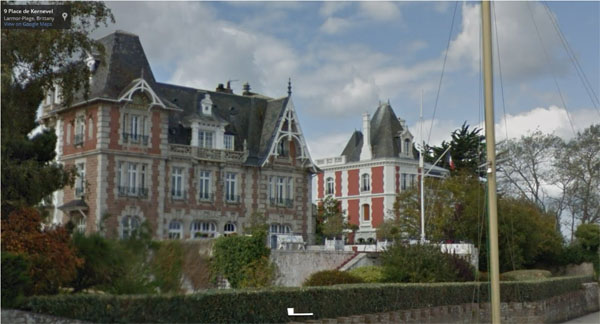
Lorient HQ, Google Maps.
1 October 1939: Dönitz is promoted Konteradmiral and Befehlshaber der Unterseeboote (BdU) or commander of U-Boats. His involvement with this arm provoked regular frictions and disagreements with Erich Raeder and was given considerable operational freedom. Until December he saw the few U-Boats he had in command sinking 221 ships (755,237 GRT) loosing only nine U-Boats. Of these 47 were sunk in the North Atlantic (249,195 GRT). Wolfpack operations however were still not launched in 1939 and most of the U-Boats lost were en route to the Atlantic transiting via the North Sea and English Channel.
G7e torpedo and wolf pack issues
Also reports soon revealed problems with torpedoes. But in 1939 the general picture was that U-Boats were authorized to hunt alone and catch single ships. Wolf pack attacks were postponed to the autumn and the Norwegian Campaign only delayed matters. In May 1940 the torpedo problems were still not solved, to the dismay of Dönitz, until he ordered the removal of magnetic pistols for contact fuses and the removal of the depth control systems. Indeed 40 attacks were reported having torpedo launched with no kill and about 50–60 ships (300,000 GRT) were saved by these faulty torpedoes.
Single operations also were encouraged by early successes such as the Royal Oak (Special Operation P) and Courageous sinking. Lieutenant Prien was not keen at taking such a gamble of penetrating Scapa flow, he was clearly pushed by Donitz agenda and required nerve and determination to achieve success. Dönitz prestige grew in Hitler’s entourage thanks to the propaganda value of the exploit, and further motivated that kind of actions. By May 1940, 101 ships had been sunk (9 in the Atlantic) but by June 1940 losses amounted to 140 ships (53 Atlantic) and 585,496 GRT for 15 losses.
In May 1940, the Luftwaffe became an ever greater ship killer, notably at Dunkirk and afterwards than U-boats, claiming 48 ships in May, despite Allied warships were dispatched for these evacuation, leaving many Atlantic convoys unprotected. However Luftwaffe scores went less impressive over time with 195,193 GRT in June and less than U-Boats during the summer. Moreover, the land campaign gave at first Norway for creating new U-boats bases on the north-Western Approaches and groups tested land based radio communication to coordinate on convoys.
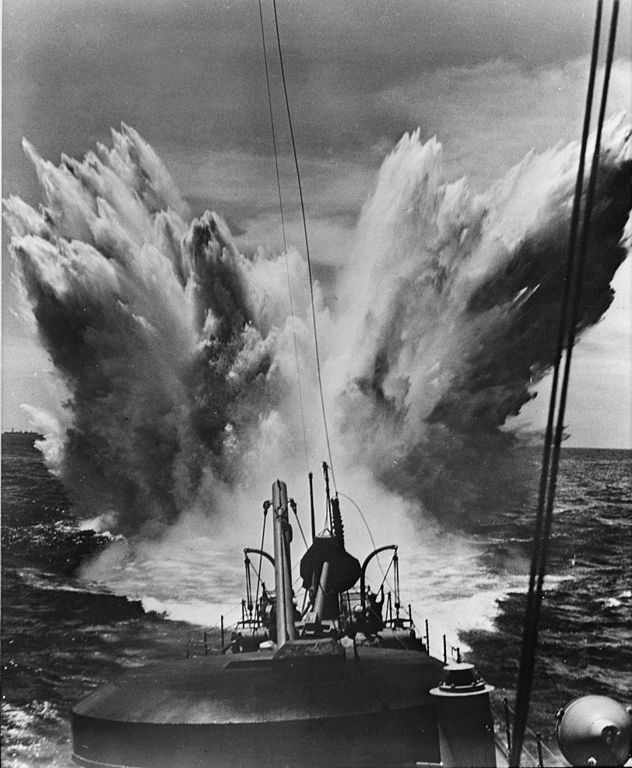
Depht charge attack in the atlantic, circa 1943
The fall of France was even more important, giving Germany better suited bases at Lorient, Brest, St Nazaire, La Rochelle, or and Bordeaux. This ensured to extend U-Boat ranges considerably in the Atlantic. Meawnhile, Dönitz opposed Operation Sea Lion and vehemently advocated to continue attacks on seaborne trade, which became obvious after Göring’s failure over Britain. Dönitz gained importance as the specter of a long war of attrition gained traction, and now implemented efficiently wolf pack tactics against convoys with night attacks.
Welcome Italian support
In early 1941, he even had the support of the Regia Marina, which submarine fleet, 26 long range models based in Bordeaux were precious for operation in the South Atlantic. The Regia Marina’s submarine fleet in fact surpassed German U-boats available for this campaign at first. However, to the dismay of Dönitz, U-boat construction started to materialize. To obtain more from Italy Dönitz complimented Italian bravery and daring but failed to improve their training, tactics or having them joining his coordinated packs for more efficiency.
Dönitz’ wolves
The U-boat’s early successes of 1940 confirmed in early 1941 benefited from a small bunch of highly experienced pre-war commanders. Famous names like Otto Kretschmer, Joachim Schepke, Günther Prien and also less known Hans Jenisch, Victor Oehrn, Engelbert Endrass, Herbert Schulze and Hans-Rudolf Rösing had both the skills, guts and judgement, and faced poorly defended shipping lanes.
However some price was paid and until March 1941, Prien and Schepke were lost as sea, Kretschmer was captured as the convoy system was implemented and get better by the day. At the same time there were still too few boats deployed in the Atlantic at a time. By January 1941 Dönitz made sure that at least six were on station at all time, ready for any intervention. In addition however they still were barred from more success by unreliable torpedoes.
Dönitz involved in daily operations and took all major operational level decisions, assisted by Eberhard Godt. As he was more often visiting Hitler and the HQ, Godt was left to manage daily operations over time, debriefing personally his superior and bring his captains reports as a quartermaster, helping maintaining a foot in gronded reality.
Dönitz made sure that his close relationship and tight bond with his captain remained strong all all times. And this did not limitd to the distribition of medals or awards, as an ex-submariner himself, Dönitz recoignised this recognition for the risk taken was always there, and risk-takers were always rewarded.
From War prizes regulations to unrestricted warfare (September-November 1939
-23 September 1939: Hitler, on the recommendation of Admiral Raeder, approved that merchant using their wireless and stopped by U-boats should be sunk or captured
-28 September: Prize Regulations in the North Sea was withdrawn.
-2 October: Complete freedom was granted on attack darkened ships off the British and French coasts.
-4 October: Prize Regulations cancelled in waters 15° West
-17 October: The German Naval Staff gave the greenlight for attacking without warning. This was for all ships “identified as hostile”.
-19 October: Darkened ship’s zone now extended to 20° wet.
-17 November 1939: Restrictions stll placed on passenger liners were also lifted.
Neutral shipping was warned to enter a zone defined under American neutrality legislation, forbidden to American shipping. Even so, it was forbidden to enter it steaming without lights, zigzagging or taking defensive measures. Full unrestricted warfare was still not enforced however to avoid antagonising neutrals and especially Americans, despite it was later pushed forward was Admirals Raeder and Dönitz as Hitler could be persuaded to accept the consequences.
1940: The swap to Sub warfare
In 1940, the Royal Navy (Atlantic commander: Rodger Winn and Kenneth Knowles) dispersed its efforts and in particular its destroyers, which disappeared rather quickly, more often victims of the Luftwaffe (which ultimately caused almost more losses of military ships than Submersibles). As the submersible construction plan matured and the number of units became sufficient, Dönitz was going to develop alongside the old tactic of individual “corsairs”, a tactic more suited to the destruction of convoys, still little defended for lack of escorts (there were in fact quite a few in service in 1939 within the RN, but many destroyers), and later, in October 1940, the “Rüdeltaktik” wolfpacks seemed to be fully implemented.
Dönitz and Raeder accepted the death of the Z in 1939 and the U-boat programme was in fact the only part to survive it. There was no hostility between Raeder and Dönitz and the former lobbied Hitler, both to increase submarine production to at least 29 per month and pushed for full unrestricted warfare. Hermann Göring, head of the Four Year Plan and commander-in-chief of the Luftwaffe did not acquiesce and in March 1940 Raeder only accepted 25 per month, which anyway could not be reached that that time. From two, only six U-Boats were delivered in final half of 1940.
In 1941, deliveries would increased to 13 in June, and at last 20 in December. At the same time from September 1939 to March 1940, 15 U-boats were lost in action and despite the impressive tonnage sunk this still had little impact on the Allied war effort. The principle was to coordinate a sufficiently large number of U-Bootes towards a single target (the convoy) to exceed the number of escorts was working against slow Allied freighters, with night attack on surface and possible diversions. This tactic implied An operations center (based in Lorient for the central Atlantic area) and long-range aviation to locate and signal convoys. U-boats needed coded TSF transmission systems to receive instructions and coordinates between themselves on location points of attacks during their surface cruise.
On the Allied side, we were not going to witness helplessly the destruction of the convoys, quickly named PQ (followed by a number) or QP according to their origin and destination. The USA was not officially at war but intended to protect merchant traffic in their sector of the Atlantic and set up in February 1941 an Atlantic fleet (commanded by Admiral King), also in the interest of the national economy: In March, the loan-lease agreements were signed.
Were mobilized first for the escort all kinds of warships: Avisos (“sloops”) but also destroyers, rapids, cruisers and even battleships: Indeed Raeder considered above all the surface fleet as the first instrument of destruction of convoys, and aligned for this at the start of the war 6 armored buildings (the three Graf Spee and the two Scharnhorst), waiting to receive the first of its two enormous battleships of the Bismarck class, as well as 3 heavy cruisers and 6 light.
With the defeat of France, the naval bases of the Atlantic fell into the hands of the Germans and with them a formidable outlet on the Atlantic. Even after the loss of the Graf Spee, Hitler did not question the tactical concepts of Raeder, fundamentally optimistic: The German fleet, thanks to its territorial conquests, were no longer confined to the Baltic and threaten the Royal Navy on many areas , forcing him to disperse his forces – and weaken the defense of his convoys.
Put in the context of the numerous losses recorded at the start of the war, the abrupt decision to neutralize – including by force – the French fleet, far superior to the Kriegsmarine in 1940 – is better understood. As for the successes of Raeder’s surface ships, they began to decrease in proportion to the losses recorded by the U-Boats. One of the factors which greatly contributed Hitler to change his mind and to rally to the views of his future dolphin, Dönitz, was the final exit without tangible results from the Bismarck, then the flagship of the fleet.
The latter had been designed with the very simple aim of attacking the battleships of a convoy which he would then destroy to nothing, once the escort was destroyed. Outperforming any warship in the world at the time, it was indeed a serious threat, considered a priority when it was released in May 1941. This action was part of the continuous movement intended to bend England after the failure of the battle of the same name. Carried away by its unprecedented successes in Western Europe, Hitler expected to cross the thin strip of sea that was the channel and unleashed his panzerdivisions in the Sussex countryside.
Faced with the failure to bend the British air force during the battle of Britain, Hitler dropped operation www and trusted Raeder and Dönitz to asphyxiate Great Britain by cutting the links to its empire. The alliance in the east with the USSR and the neutrality of the USA in the west made this task indeed possible. As we know, this vast enterprise was not only confined to the Atlantic, but became a ground offensive against Egypt, Suez being a vital artery, another crossing point, and the Mediterranean locked by Malta in its center and Gibraltar to the west. The Luftwaffe therefore also played a crucial role in these operations.
Except for a single aircraft, developed in 1936 to provide daily service over the Atlantic: The Focke-Wulf 200 “Condor”. The latter was naturally converted into a military livery, armed and became a device both intended for anti-ship fight and reconnaissance (he could indeed patrol to the middle of the Atlantic) under the name of “Kurier”. Finally, in the coastal zone, the Kriegsmarine could count on a fairly large fleet of S-Bootes, long-range torpedo boats, probably the best of the war although not very versatile, and the R-Bootes, all both wetters and fast minesweepers.
1941-42: The Golden years of U-boats
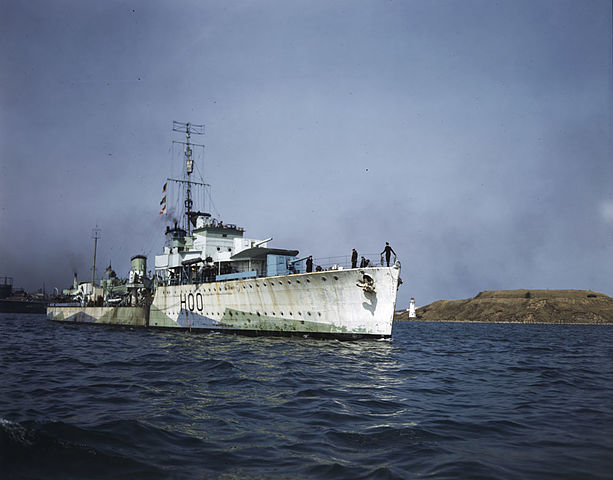
HCMS restigouche in the St Lawrence river, in western approaches camouflage
By the beginning of the summer of 1941, the number of U-Boats in service had doubled and the tactics of the packs began to bear fruit. The Italians sent their own submersibles to reinforce these but without much success as comander refused to apply worlf pack tactics. The bleeding in destroyer squadrons had been such, that the acquisition of 50 vintage American “four-pipers” under Lend-lease was considered a real breath of fresh air at least temporarily.
The Royal had its yards busy to replace losses, including those of the Commonwealth when Hitler made the decision to invade the USSR. The main reason was to eliminate a potential adversary in the east, to further isolate Great Britain, to give a “vital territory” to the German people and considerable resources of labour and resources such as metals, wheat, and especially oil and thus to win the means of a durable attrition, industrial was and returned to finish off Great Britain. By April 1941, 688,000 tonnes of merchant shipping had been sunk, but the Allies succeeded in decrypting the Enigma code in August.
The consequence of this decision, following the abrupt end of operation barbarossa in front of Leningrad, Moscow and Stalingrad, “General Winter” action, was to gobble up more resources and more men than any past offensive. The Blitzkrieg had failed in the immensity of Russian and in face of the though and resourceful Russian people, while their possible rejection of communism was underestimated. In addition, the allies started to help Russia, something also the Germans thought not possible due to adverse ideologies. But before the opening of a second front supply of fresh material to the Soviet Army became a reality by a new route, that of the Arctic.
From 1942 to 1944, the “battle of the Arctic convoys”, is sometimes considered as an operational sub-theater of the Atlantic. It mobilized the means of the Royal Navy, and the Germans opposed it from their Norwegian operating bases, using the Luftwaffe’s Heinkel 115 torpedo seaplane notably, while the bulk of Raeder’s surface forces took place in the fjords, led by the formidable KMS Tirpitz. Threatening the North Atlantic were also U-Boats, plagued by heavy weather in surface. Allied defensive successes (destruction of the Scharnhorst and the Gneisenau) and setbacks (total destruction of the disperesed PQ17 convoy), material aid to Russia arrived safely, participating in the resistance and helping the great counter-offensives until june 1944.
Luftwaffe involved in the Atlantic operations
The establishment of German bases on the French Atlantic coast not only gave UBoats a closer reach, but also allowed to develop a “fleet air arm”, to provide an aerial support for naval operation in the area. At first, only long-range Focke-Wulf Fw 200 were founed useful. They could stay alift for long hours and scout the middle atlantic, and by themselves they sank many ships in the last quarter of 1940.
The main problem was Göring, which undisputed mastery of the Luftwaffe made cooperation with the Navy extremely arduous. In early 1941, Dönitz approached Hitler to secure a single bomber for maritime patrol, a decision in absentia quickly refuted by Göring. Dönitz and Raeder agreed later to setup a specialised maritime air command, but under strict Luftwaffe. Called Fliegerführer Atlantik it was not manned, equipped enough to achieve any success by 1941. After gaining traction, British counter-measures were too strong (development of a fleet air arm intercepion service, aircraft carriers)… Thus both the Kriegsmarine and Luftwaffe never worked together until 1945. The same problem was observed with the other axis member, Italy. Japan however had well integrated British lessons and clearly separated air corps between the navy and army.
Stukas were – in terms of losses of the RN – the most formidable dive bombers of the war, while above the land they were too vulnerable to modern hunters. But their use was limited by their range of action. Another dive bomber, much more prolific recorded an even higher number of casualties: The twin-engine junkers 88. Very fast, and with a good range of action, capable of carrying torpedoes and rockets, it was one of the most formidable means of the Luftwaffe in the coastal zone. On the other hand, the Luftwaffe lacked attack planes for the Atlantic. This required a very long range aircraft, a four-engine aircraft, and all projects in this direction had proved unsuccessful.
The Luftwaffe requisitioned the only transatlantic passenger aircraft Germany had in 1939, and all aircraft produced from the Lufthansa were pressed to support the Kriegsmarine. They were perfectly tailored to making great loops across the North Sea and ventured far into the Atlantic Ocean. They were excellent for maritime patrols and reconnaissance, and really were the eyes of Dönitz to locate Allied convoys and warships all targets of opportunity by U-boats, first from Denmark and then from France, some even based in Norway. They also could bom ships if needed, carrying a modest 1,000-kilogram (2,200 lb) load or naval mines. Until june 1940 and February 1941 they claimed 331,122 tonnes of shipping, carried out at very low altitude in order, often dropping three bombs on the axis line of a ship with their crude sight to have any chances of a hit. But they risked counter AA fire each time, so this required nerves from their crews. Winston Churchill even called these “Scourge of the Atlantic”.
Prior to this, the Kriesgmarine relied mostly on the BV 138C flying boat but from mid-1941 Condor deployed were instructed to restrained from attacks ans stick to reconnaissance. In August 1941, one was shot down by a CAM ship-launched Hawker Hurricane. With the gradual arrival of escort carriers however, their action was gradually threatened. By August 1942, USAAF pilots of a P-40C and a P-38F operating from Iceland claimed their first FW-200. In the end, by 1944, the dwindling fw-200 fleet saw it replacement by the Junkers Ju 290, and a few Heinkel He 177A (KG 40). Production ended in 1944, 276 aircraft has been built for the Luftwaffe.
Fall 1942: The great turn
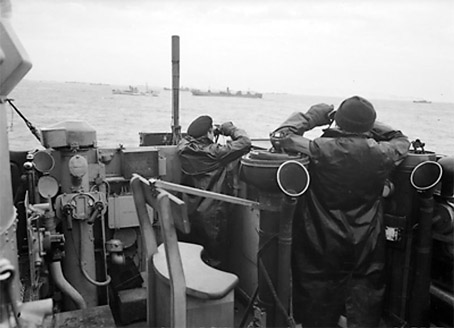
This key year of the Second World War was also in the context of the Battle of the Atlantic. After the invasion of the USSR, the other event in late 1941 was the Japanese attack on Pearl Harbor and the American Pacific fleet, the opening of a second front in the Pacific. The first consequence of the intervention of the USA in the war, against Germany and Italy following Japan, was to mobilize its industrial capacity much superior to that of Great Britain and the Commonwealth, arrived at their peak productivity.
General Tojo pursued in the Pacific the same goal as Hitler in the USSR: To secure a vast panel of natural resources which he lacked, then to protect it by a defensive glaze, to start a war of attrition which you thought one, would use the patience of the Americans. As in 1917, the Americans threw their forces into the Battle of the Atlantic.
This fleet of the west had however been amputated largely by the transfers of ships towards the Pacific, first priority of the American naval policy. Then an emergency plan was drawn up and three types of vessels specifically intended for the western front were created: New destroyers, numerous escort destroyers and submersible hunters. Despite everything, there was at the beginning of 1942 a period of wavering: The ports were lit up generously as in peacetime and the civil ships were sailing with all lights on, the commercial transport lobby and the high command obstructed the convoy system. During the few months of Operation Paukenschlag, the U-Bootes gave themselves to their heart.
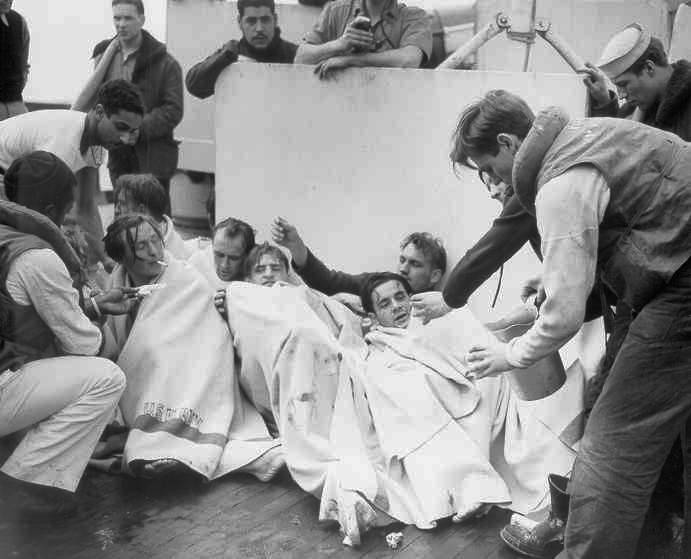
Rescued crew U-boat U-171 by USCGC Spencer, 17 April 1943.
Convoys, escort ships & weaponry
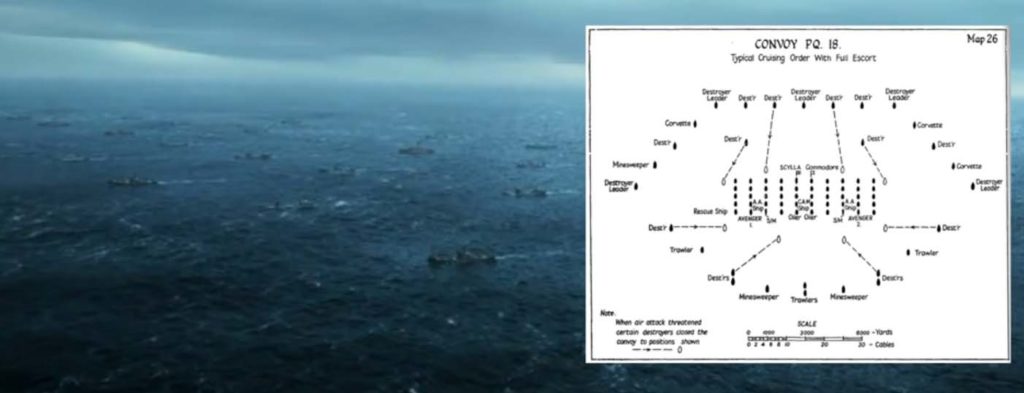
The system of convoy, a relative novelty in WW1, was perfected in WW2, as the battle of the Atlantic raged on. Civilian ships navigated in parallel columns, defining a “box” around which were evolving screeing battleships tasked of protection. Their own speed was a crucial factor. The convoy in general was advancing at the slowest speed, in general, and old pre-WW1 coal-burning compound engine steamer, but as the war progressed, the latter were disposed of, replaced by new constructions or sent to less sensitive lines.
Therefore this average convoy speed was just ten knots. Around it revolved ships ranging from converted tugs or trawlers (limited to a short range escort), to proper escorts, Flower-class corvettes capable of 16 knots, to River-class frigates capable of 20 knots, or US-built escort destroyers in general able of 24 knots (Buckley class). Needless to say the most valuable assets were destroyers, able of 33-36 knots. Due to the 1/3 speed differential, the latter were really able to perform like shepherd dogs, running across the convoy to each detected threat and deal with it.
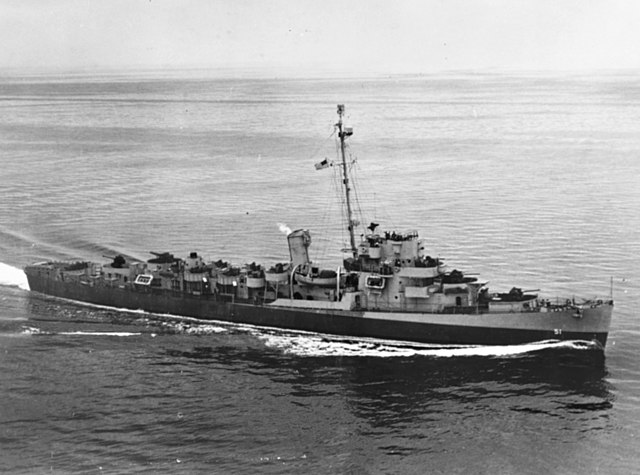
A Buckley class escort destroyer. About 500 of these were unleashed in the Atlantic until 1945, starting in mid-1942.
Escort destroyers and Frigates built by the British (River, Loch, Bay), including modernized corvettes such as a Castle class (1944) were more of less lightly armed, not for ship-to-ship combat but to deal with U-Boats. Contrary to destroyers armed with torpedo tubes banks and five to six 130 mm (average) caliber main guns, escort ships were limited to a single 4-in or three 3-in guns, some AA, but their true raison d’être resided in their capability to hunt down and destroy submarines. This started with a radar and sonar, the always trusted “eyeball Mark.I” (the crew’s watchmen), and a whole load of deep charges, either dropped at the stern, in racks, or thrown at a distance broadside like the K-Guns, up to the Hedgehog, essentially an ASW rocket launcher.
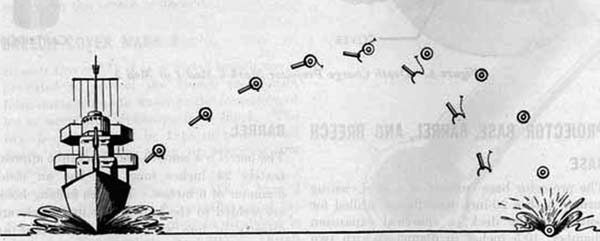
K-Gun. They were complementary to the stern racks, and could throw their ASW grenade up to 200 m. Standardized in 1942, it replaced the Y-gun as the primary depth charge projector. Four to eight K-guns were typically mounted on a warship, but they needed to be loaded by hand each time. This required the ship to move above a certain speed to avoid being damaged by the blast. They were also useful to spread depth charges on a certain pattern over a suspected position.
Indeed by range, the huff-duff detection device was first to catch radio communication and link them to a source, while the radar was second to pick-up a surfaced U-Boat. But in 1941 they were fairly primitive and short range. In 1945 that was a whole different story and they were sensitive enough to catch a periscope. Third, the sub’s kiosk was spotted by watchmen, and fourth, as the escort ship started firing and the sub usual plunged, acoustics came into use, via the sonar. The latter can detect the noise of U-boat propellers, but as soon as the distance with the escort ship fell, the signal was covered by the escort ship’s own propellers. From then on, by calculation, a good captain could manoeuvrer his ship right on the spot of the suspected route of the submarine, and thrown a pattern of ASW grenades.
ASW grenades
For the latter, supplies were limited, and usually ten grenades were launched on a whole area of 200 m2 or more, set at a specific depht to explode in proximity to other targets. Early interwar british patrol vessels had 30 up to 60 DCs, the Flower (which design was derived from a whaler), 40 to 72 DCs. The Castle class ships however, only had 15 DC but compensated by having for the first time a Squid ASW system. USN escorts, larger, carried up to 160 depth charges, far more than destroyers.
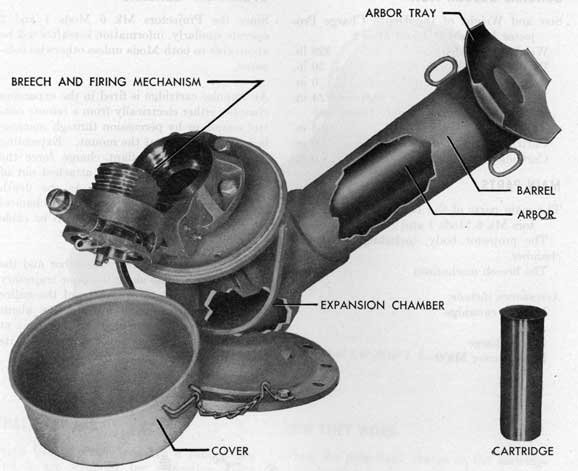
K-Gun, part of a USN ww2 ordnance training booklet.
Their effective use combined resources and skills of many individuals, the Sonar, helm, and depth charge crews. In the midst of the fighting, the captain also had to carefully monitor the movement of other ships to avoid collisions or blast damage and coordination with other escorts.
Aircraft were aso mobilized to drop depth charge and used appropriate tactics using speed for surprise and a very low run, just over the waves, for better accuracy. At the end of the war, they used radar to detect the target and a Leigh light to illuminate them just before the attack. The innocuous-looking PBY Catalina was really the bread and butter of this aerial cover (see allied fleet air arm) and generously used depth charges, which in general could sink deeper and faster due to gravity.
As the Battle of the Atlantic wore on, British and Commonwealth forces became particularly adept at depth charge tactics, pioneering hunter-killer groups and combining their respective ASDIC (sonar) ranges to detect submerged submarines when protecting the convoy. To deliver depth charges, an escort had to pass just over the contact, loosing sonar contact and therefore attacking blind. A skilful submarine commander then could take evasive action, but it was not rare that ships and surfaced U-boats fired at each others. When an U-Boat was crippled by a grenade, it could surface to signify the fight was over, or continue fighting with the deck gun and AA, and evacuate the crew at the same time of the situation was desperate enough. It could also stop its engines completely to confuse the acoustic operator, sink rapidly to the bottom ad hide there for some time, or change direction suddenly.
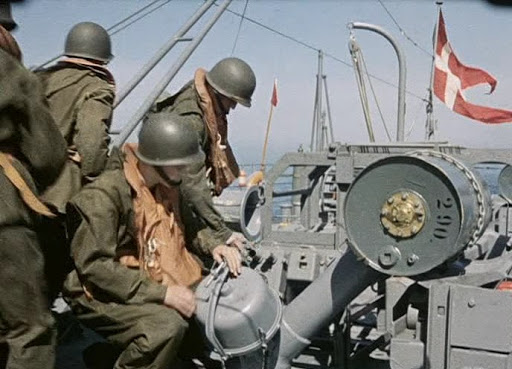
In many cases, when forced to surface, closing as much as possible with the escort was a way to avoid being targeted by its onboard armament. Indeed the main and secondary guns, and AA armament were unable to be depressed enough to target an U-Boat a hundred feet away while the latter was much lower on the surface and could target and hit the warship with its deck gun: A Type VII had a 88 mm guns, a Type IX had a 105 mm gun, as heavy as the main armament of Corvettes and Frigates, or more. Added to rapid-firing 37 mm and 20 mm guns, both can devastate decks during a pass. They were also beyond the range of K-Guns, but if crossing the ship by the other side, dropping available grenades at the right moment could have devastating effects.
Hedgehog ASWRL

A British invention, it consisted in a battery of 24 spigot mortars, firing ahead of a ship on a submerging U-Boat; It was an emergency weapon, and by simple gravity, rockets charges could detonate down to 3-6 meters, so hitting a submarine that was slowly diving. Indeed, on the 24 small depth charges launched by the rocket at least 2-3 were to hit the U-Boat. It became so evident and so efficient that it became widespread, notably in all commonwealth and British escorts, but also on USN destroyer escort vessels. However if they appeared in 1943 (first, USS Evarts, launched in December 1942, in service by April 1943), the British introduced it from mid-1942 already. One of the great advantage of the system, which created a cicular pattern of explosive on the suspected location of the U-Boat, was to allow to keep sonar contact a all times.
See also: https://www.youtube.com/watch?v=CcrGLVJms8E
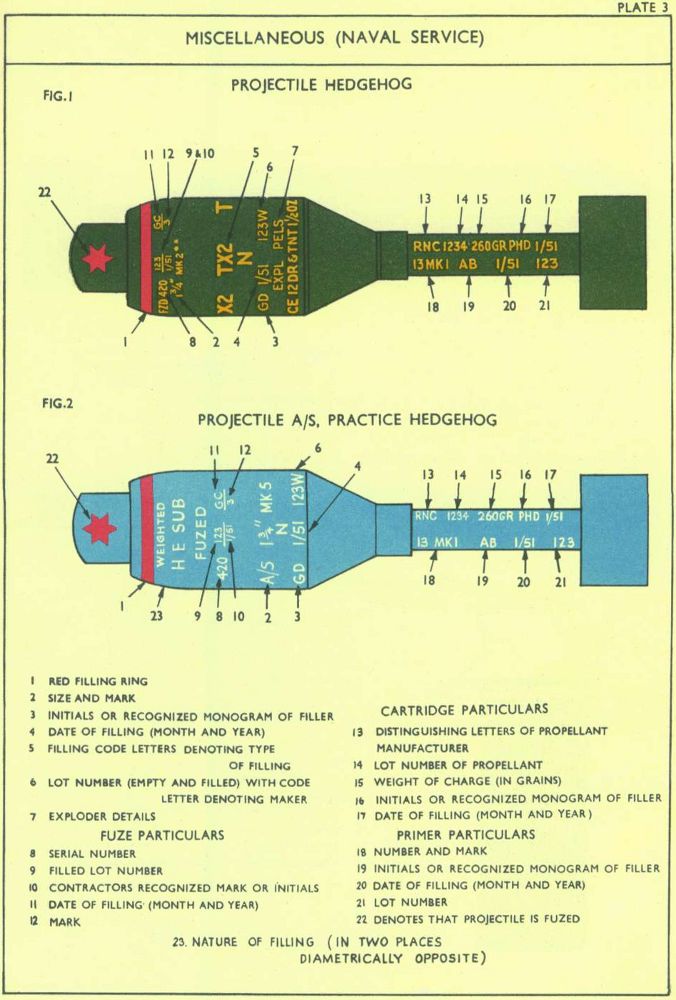
Squid ASWRL
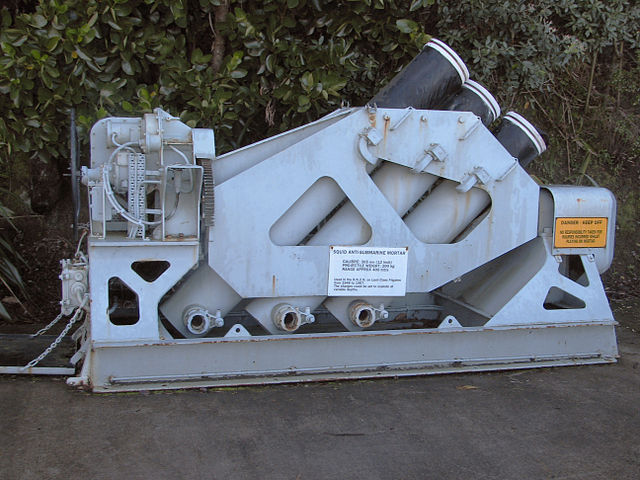
This late war ASW system was another mortar (like the K- and Y-guns), but with a twist: The charge flew faster and farther thn the Hedgehog and it was much heavier, hence a greater chance to completely destroy an U-Boat on impact or near-miss. It was ordered directly from the drawing board in 1942 and rushed into service in May 1943 onboard HMS Ambuscade, then in service on HMS Hadleigh Castle and 70 other British frigates and corvettes. HMS Loch Killin mad the first kill on 31 July 1944 (U-333) and 17 more would follow in 50 attacks. It was produced in the 1950s and used well until the 1970s. The last was used in April 1977, by the Type 61 frigate Salisbury.
It consisted in a three-barrel 12-inch (305 mm) mortar, off-bore from each other in a frame which could be rotated horizontally for loading. Each weighed 390 pounds (177 kg), added to a 207-pound (94 kg) minol charge for launching. They were installed either at the stern or bow, and each projectile had a sink rate was 43.5 ft/s (13.3 m/s) plus delayed setup fuze, with data updated right up to the launch. Each of these charge could sink and explode at 900 feet (270 m), max depht of any U-Boat. When fire at sonar’s data signal, they formed a triangular pattern of about 40 yards (37 m) at around 275 yards (250 m) ahead of the ship. Generally ships had two of these systems, drawing a salvo opposing triangular spreads. The explosion was set about 10 m of the target target, ensuring the pressure wave crush the hull.
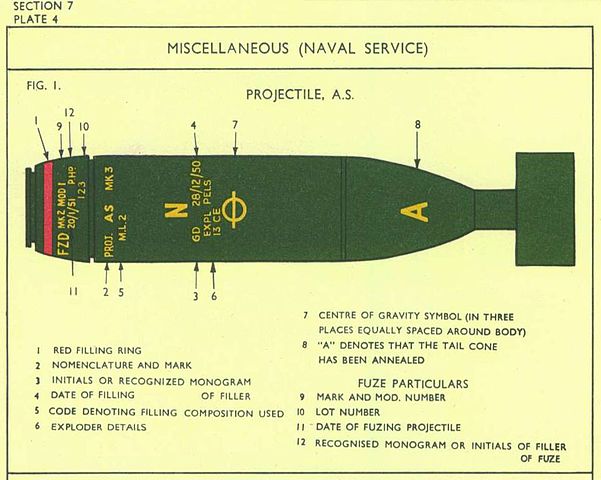
The enigma machine
In February, the Kriegsmarine added a rotor system to the Enigma decryption machine: The allies did not have the parade and were deprived for a few months of information on the movements and objectives of the German fleet. March was a dark record: 834,000 tonnes sent from the bottom. If the German losses were also strong, there were a hundred U-boats simultaneously in service on the Atlantic, and many others in the Mediterranean, the North Sea, Ireland, Indian Ocean, African coasts, and as far as the Gulf of St. Lawrence and Mexico, in the Caribbean.
In October, another event, very discreet but nevertheless of capital importance, upset the means of fight against U-Bootes by the Royal Navy: The keys of the famous code of radio transmissions Enigma had been broken again, and until by the end of the war, talented mathematicians and primitive computers had been used to stay one step ahead of German encodings, which never suspected that the English had this Kriegsmarine code.
Radar, sonar and Huff-Duff
Two other electronic gadgets were added to the panel of means available to the escorts: The short-range (centimeter) radar, finer in its detection (capable of identifying a small lifeboat and a fortiori a submersible bathtub, even a simple periscope at the end of the war, arrived in March 1943), the Metox short transmission detector, an electronic sonar, much more efficient than the simple hydrophonic “yoghurt pots” used in 1916 in the hold, and finally the huff antenna -duff, capable of a fine trigonometric calculation to detect the exact position of a reckless U-Boote who uses his TSF to take his instructions from the HQ.
Escorts
Another asset in the sleeve of the British admiralty, its mass construction of inexpensive escorts: To alleviate the congestion of military yards, we called upon dozens of civilian yards to mass produce corvettes of the “Flower” type “and derivatives, throughout the Commonwealth, mainly in Canada. In addition to the conventional destroyers, the yards delivered large quantities of Hunt-type escort destroyers and River-type frigates. These ships had armaments still limited in 1940, rapid-fire cannons and ASM grenades, but two other means of action were soon to be adopted: ASW rockets, of the “Hedgehog” type British or American Mousetrap, and the new grenades ASM adjustable in depth and at higher power, coupled with the Sonar detection parameters.
The fleet air arm
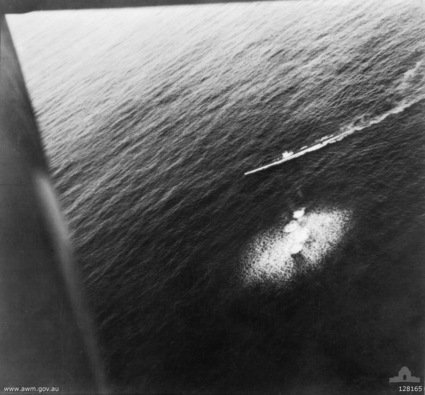
U-26 attacked by a Sunderland
But the biggest opponent of the U-Bootes was probably also the most effective of the war: The plane. The latter owed its efficiency to the weak bridge of submersibles, inscribed in the natural order of things: The biggest predators of fish except marine mammals are birds, for the essential reason that what is submerged cannot be seen on a profile but from the sky. A submersible, returned periscope, was invisible to the first escorts of 1914 deprived of means of listening, and remained it for buildings of 1942 deprived of their Sonar. As sharp as the eyes of the watchers are on their mast tops, they were not worth the vision from above of the pilots. They could, especially in calm weather, spot the black shape of a U-boat submerged more than ten meters away.
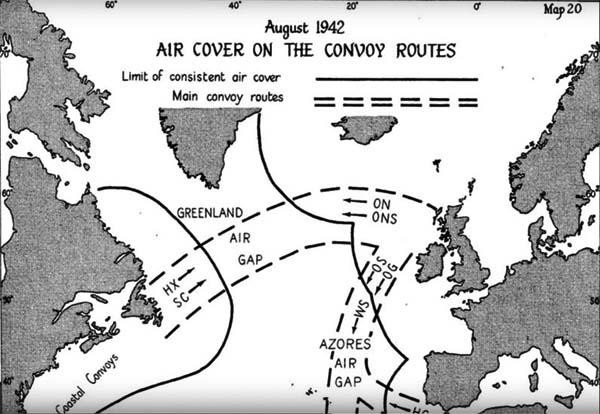
The dreaded middle atlantic gap
So it is quite natural that the aircraft, effective in reconnaissance and attack and support missions, became the most formidable of the anti-submarine means. There were ground-based aircraft derived from heavy bombers and the long-range Coastal command multi-engine seaplanes that could patrol the middle of the Atlantic. To increase their range, dedicated tankers, and even a floating naval base, ancestor of the concept of mobile concrete base were developed.
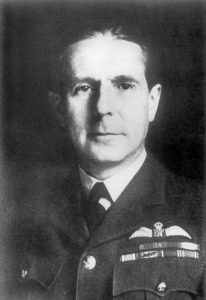 Philip Joubert de la Ferté, Coastal Command’s second AOC-in-C., which continually complained about the neglect of Coastal Command.
Philip Joubert de la Ferté, Coastal Command’s second AOC-in-C., which continually complained about the neglect of Coastal Command.
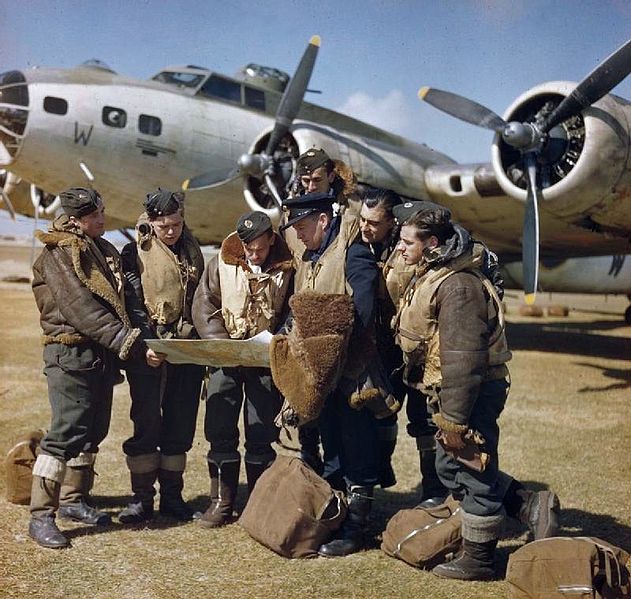
RAF Crew briefing in front of their B17 Fortress Mark IIA at Lajes, 1943.
The aircraft on its side was able to implement close to the convoy an intense air cover. This is how the escort aircraft carrier was created, alongside the traditional category of the aircraft carrier, fast and intended to cover fleets. The Royal navy built about forty and received fifteen others, the USA put more than 150 in service for the two oceans. Also very important, in June 1942 a powerful searchlight was developed for long range planes patrolling at low altitude at night. Coupled with a radar, it forced the U-Boote to keep their heads under water at night while this period was used to recharge the batteries and renew the air.
Industrial attrition: Outbuilding losses
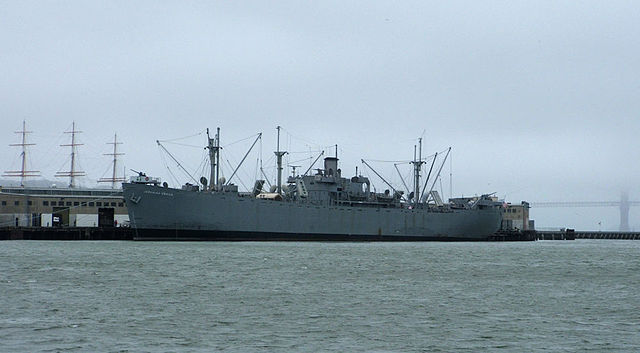
Finally, indirectly, the Battle of the Atlantic was won not only by replacing escorts, but the transports themselves. As early as 1940, the American and British admiralty had mass-produced cargo ships by the hundreds. There was coordination between these projects, ended up on both sides with two families of cargo ships. The P4, a large fast freighter were intended to sail faster than U-Boats, and solved part of the problem, not part of the famous “Liberty-Ship”, slower, but simplified to the extreme with no innovation, betted on large capacity, double hull and ballast, modular construction to be delivered like sausages. This superclass comprised the C1, C2, C3, C5.
Liberty Ships had the fastest production run of any ships in history, to stack nearly 3000 ships in the matter of three years, with absolute records in terms of speed of construction, especially at the Canadian shipyards of the wealthy Henry J. Kaiser. Many Liberty-Ships would sail under many flags after the war, being transformed, “jumboised” and slowly vanished as container ships replaced bulk cargo on the seven seas. The longevity of some, in particular under Greek flag, is hardly explained by the speed of construction. It should not be forgotten also that all Liberty Ships were normally armed, sometimes even heavily. This led to a symbolic milestone to be reached in July 1943: The tonnage built was now much greater than that the one sunk by the axis.
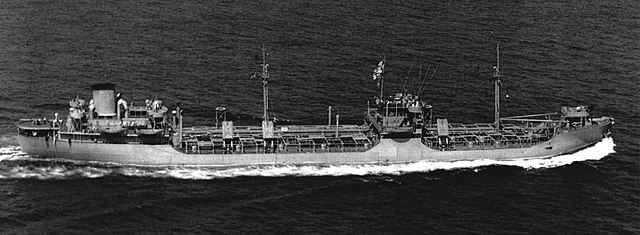
A T-2 Tanker in 1943. They carried fuel oil, diesel fuel, gasoline and sometimes black oil-crude oil and they often served until the end of the cold war under various flags.
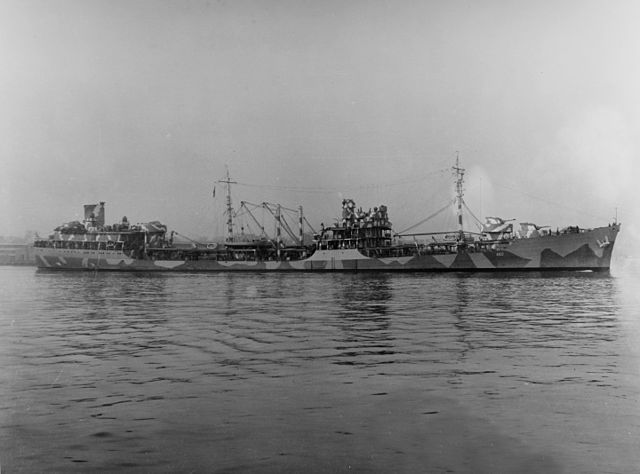
USS Cimmarron off Norfolk NyD, lead ship of the T-3 class in Feb. 1942. The T-3 became the main “fleet carriers” of the USN, faster and larger than the T-2.
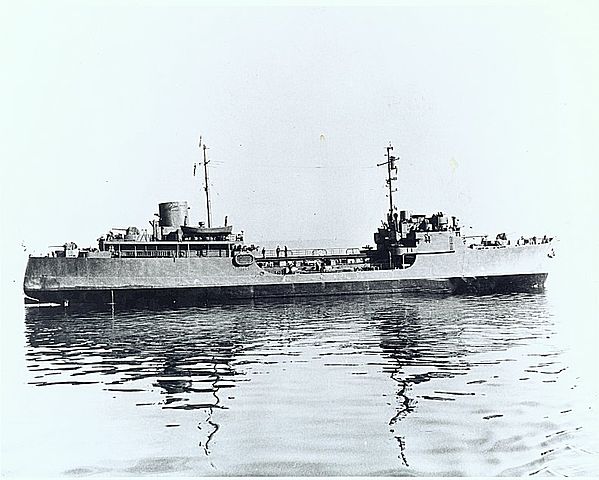
T-1 class, USS Patapsco, lead ship in 1942. These were the smallest of the bunch, 200 to 250 feet (61 to 76 m), 12 knots.
Nomenclature: USA – US Maritime Commission
The War Shipping Administration (WSA) was setup by the US government as an agency to supervise the purchase and operation of shipping for the war. Its dependency was the Maritime Commission, in charge of construction and classification of the ships needed for the war effort. This also including requsitioning and operating liners.
The first step was the 1936 American Merchant Marine Act passed to subsidize the annual construction of 50 merchant vessels usable in wartime as naval auxiliaries and manned by U.S. Merchant Mariners. This was in 1939 pushed to 100 and then 200 ships yearly in 1940. These were to comprise two tankers types and and three merchant types all propelled by turbines to be fast enough to escape subs. In short this was the blueprint for emergency types of WW2. More urgency came from a sudden order from the British of 60 merchant vessels in 1940 to replace early losses. The Maritme commission in addition to the C1-C5 types also ordered the T-2 tankers, of which 533 were built in several sub-types from 1940 to 1945. The larger, faster and much improved T-3 tankers of 24,830 tons, capable of 18 knots, served mostly as navy auxiliaries and many hulls were requisitioned to built fast escort aircraft carriers, notably the Sangamon and Commencement Bay classes. The smallest were the T-1 serie, buil for smaller distances and loads, 48,000 to 280,000 bbls or various loads, including chemicals.

But contrary to US designs, the British came with an obsolete solution, cargo ships with a decades old, trusted compound steam engine with a total output of 2,500 horsepower (1,900 kW) and coal-fired boilers so not to take on oil supplies reserved for the Royal Navy. This was a cheap, reliable vessel, easy to manage and built, but not able to escape U-boats.
The Commission was submitted the British private venture design called “Northeast Coast, Open Shelter Deck Steamer” by Sunderland by J.L. Thompson & Sons, based on their “tramp steamer”. The first of this approve type was launched as SS Ocean Vanguard, on 16 August 1941. It was modified by the commission to be adapted to US construction practices and soon approved. The C1 serie were the smallest of the three Maritime Commission designs, tailored for shorter routes, with high speed, and were leased to the Briish Government whioch also build hundreds as the “Empire” class.
It was also decied into four sub-variants, C1A/B, C1S AY, and C1M, the smallest of all.
It was called EC2-S-C1:
-‘EC’ stands for Emergency Cargo
-‘2’ for 400 – 450 feet (120 and 140 m) long at the Waterline
-‘S’ for steam engines
-‘C1’ for design C1.
It was soon known simply as “design C1”. Derivative: the EC2-S-AW1 Collier
-C2 Cargo ships (Z-EC2-S-C2) Tank carrier, four holds, kingposts.
-C3 cargo ship (Z-ET1-S-C3) Tanker (also later known as the Armadillo class)
-C5 cargo ship (Z-EC2-S-C5) Boxed aircraft transport, four holds, kingposts.
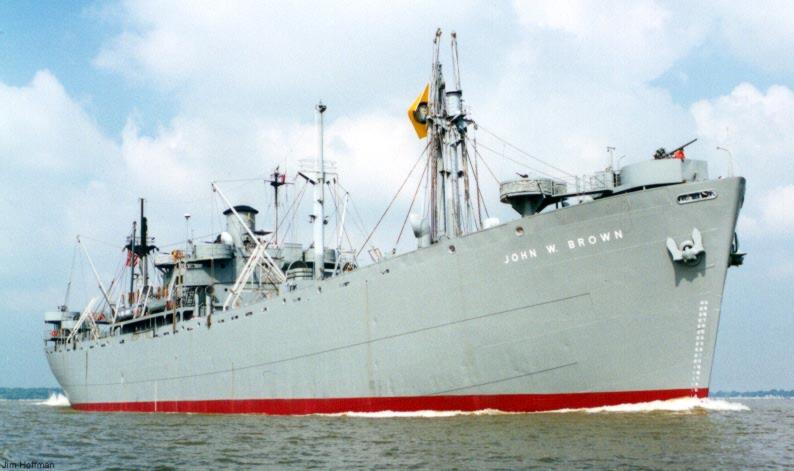
These were all “Liberty Ships”, but not propelled by steam turbines as many yards did not mastered the technology but a trusted 140-ton vertical triple expansion compound steam engine in its place. Parts that were manufactured by one company were interchangeable with those of another, and the whole design was basically “open source”, and rendered so by the government. The ships were not able to go further than 11 knots and could not escape submarines. But their double hull procured some limited ASW protection. It was not rare for an u-boat to fire 2-3 torpedoes to sink one. On the other hand, rushed construction, from 25 down to 5 days on some cases, meant welding assembly in particular was ofte faulty and many ships broke in two at the first impact, and some during a storm.
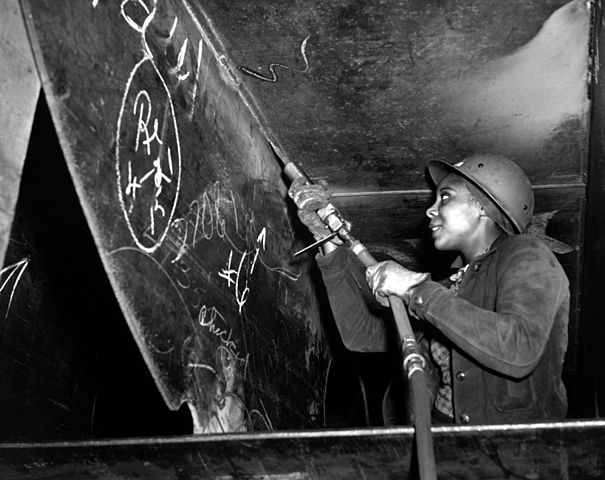
Shipyards producing liberty ships:
-Alabama Drydock and Shipbuilding, Mobile, Alabama
-Bethlehem-Fairfield Shipyard, Baltimore, Maryland
-California Shipbuilding Corp., Los Angeles, California
-Delta Shipbuilding Corp., New Orleans, Louisiana
-J.A. Jones Construction Company
-Panama City, Florida
-Brunswick, Georgia
-Kaiser Company, Vancouver, Washington
-Marinship, Sausalito, California
-New England Shipbuilding Corporation, South Portland, Maine, East Yard, West Yard
-North Carolina Shipbuilding Company, Wilmington, North Carolina
-Oregon Shipbuilding Corporation, Portland, Oregon
-Permanente Metals Corporation, Richmond, California (a Kaiser facility)
-St. Johns River Shipbuilding, Jacksonville, Florida
-Southeastern Shipbuilding Corporation, Savannah, Georgia[61]
-Todd Houston Shipbuilding, Houston, Texas
-Walsh-Kaiser Co., Inc., Providence, Rhode Island
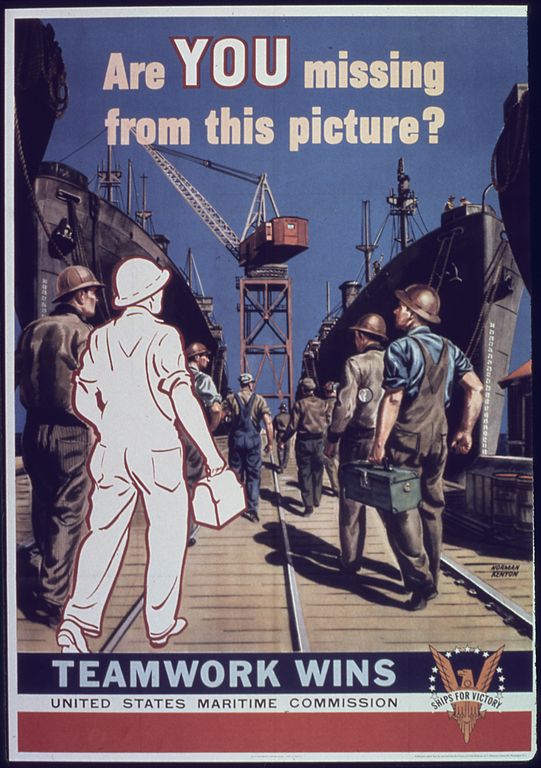
Nomenclature: British Empire’s ministry of transports
The Ministry of War Transport (MoWT) was a British Government dept. formed in 1941 to control shipping and allocating resources. It was formed by merging the Ministry of Shipping and the Ministry of Transport, also including land transport so to avoid personal waste and better of co-ordination. It was first headed by Lord Leathers until July 1945, by Alfred Barnes.
The naval part included services such as the Allocation of Tonnage Division, Ship Management Division, Coal Division, Coasting and Short Sea Shipping Division, Commercial Services Division, Foreign Shipping Relations Division, General (Shipping) Division, Liner Division, Sea Transport Division (working closely with the Royal navy), Ship Management Division, Shipping Operations Control Division, and Tanker Division. From 1942 were created the Marine Departments, responsible for docks, ports and harbours and her Majesty’s Coastguard. The MoWT was responsible notably of the managing of US-built Victoty shops and British Empire ship’s construction throughout the British Empire yards;
Empire ships
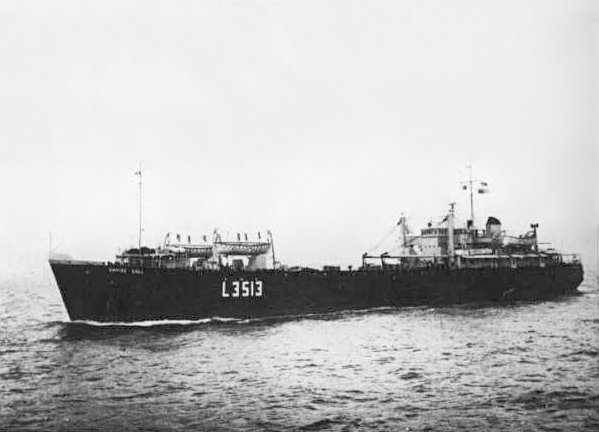
RFA Empire Gull
Empire ships were a generic term for any different ships, mostly coming from new construction, but also captured or seized vessels. Some Empire ships were nevertheless obtained from the United States, via purchase dor lease. The name recuped freighters, tankers, even aircraft carriers, fast cargo liners or tank landing ships, even Deep Sea Salvage and Rescue Tugs, and hundreds were produced. During the war, the already world’s largest British shipping has swolen to 12,000 vessels of which 4,000 were lost, mostltly the result of the battle of the Atlantic.
The subject is so vast it will be declined into a portral page and multiple posts in the future.
Coasters: Empire F series, small coasters of 142 feet (43 m), 410 GRT.
Coastal tankers: ‘Chant’ class, 43 built numbered 1–69 (gaps).
Tankers: ‘Ocean’ type also called ‘Three twelves type’: 12,000 tons deadweight, 12 knots, and Wave class 1943, 15 knots.
Aircraft carrier declinations comprised the Catapult-armed merchantmen (CAM) ships conversions, and Merchant aircraft carrier (MAC).
Fast cargo liners: 15-16 knots, non standard, standard and refigerated sub-types.
Heavy lift ships: Based on Norwegian bel type, plus 10 VTE or Diesel powered.
Scandinavian Types: Represented refugee ships from Norway mostly, and Denmark.
Other types: Dredgers and hoppers, Tank landing ships, Ferries, water and ore carriers, Convoy rescue ships.
Victory Ships
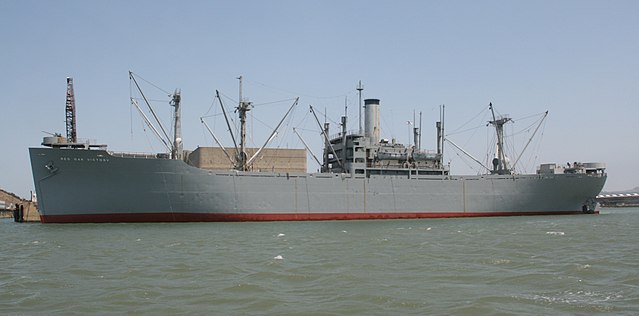
Basically Liberty ships in British service, provided by lend-lease (see liberty ships). Most were of the CV2 design, with 615 ships ordered, 534 completed and 81 cancelled.
Production:
272 built of the VC2-S-AP2 type: 6,000 hp (4.5 MW) general cargo vessels
141 built of the VC2-S-AP3 type: 8,500 hp (6.3 MW) vessels
A single experimental built of the VC2-M-AP4 type: Diesel engines
117 built of the VC2-S-AP5: Haskell-class attack transports
3 built of the VC2-S-AP7 type (Post war completion).
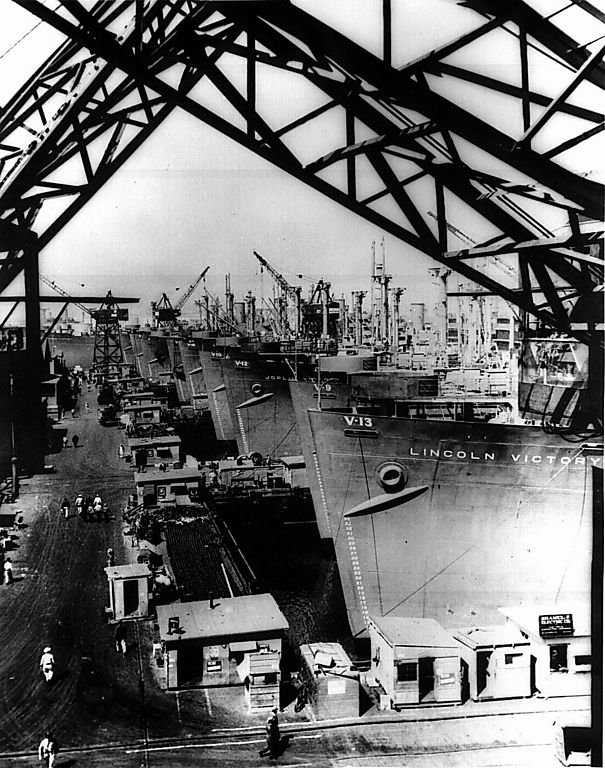
Victory ships at Wilmington NyD California, lined up before delivery.
1943-44: Dawn of the U-boats
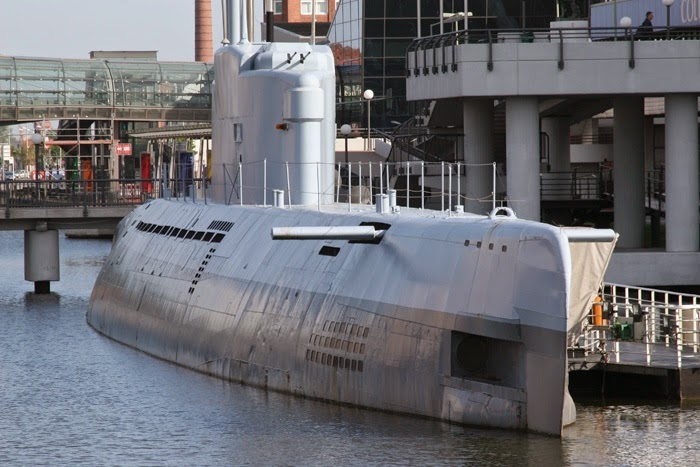
Type XXI preserved at Bremerhaven. In its principle, this closing technologically to the first true “submarine” in a sense it could stay way longer underwater, almost indefinitely if that was not for oxygen issues. The true “submarines” will come with the advent of nuclear power. But WW2 as well as WW1 has seen in service the previous generation called “submersibles”. Being underwater was the exception, not the rule.
In the end, all these means implemented, with a clear numerical superiority, tipped the scales definitively on the Allied side: By March 1943, the losses had halved in the Atlantic. Despite a production of U-Bootes (to which the Kriegsmarine would devote all its budget after the disgrace of Raeder) record (more than 1300 in total until the capitulation), German U-Boote inherited a concept which for the first times showed its limits.
Despite repeated successes that were sometimes considerable (whole convoys dispersed and annihilated like the PQ17 at the end of 1942), the U-Boote now needed to evolve towards new concepts, in order to offset the modern means massively used by the allies.
Indeed, limited to 14-15 knots on the surface, speed twice less than that of destroyers, it fell to 4-8 knots in diving, limited moreover to 250 meters under penalty of implosion. The main Achilles heel of these submersibles was their combined diesel-electric propeller. A bastard and temporary solution that had become the norm for its flexibility and longevity. In November 1944 the Snorkel, which used to renew the air in reduced immersion, was generalized to all U-Boats. By April, the workforce engaged in the Atlantic had reached its peak, but the losses were already appalling.
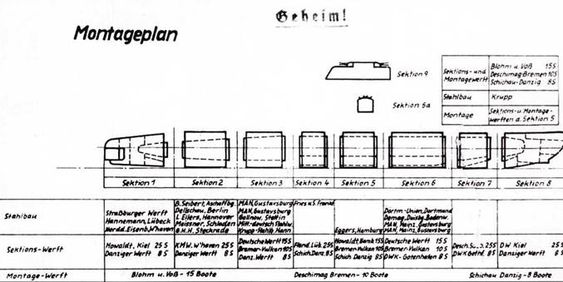
German engineers like Walter developed the principle of internal loop combustion engine for submarines, for not releasing any combustion product on the surface or diffuse them enough to not create any wake or trace. Various chemical solutions were tried, compressor systems, and for the most daring scientists, nuclear power was thought after. Finally, Professor Walter’s solution remained the most practicable, although it required a long industrial adaptation time Germany lacked. The solution had been tested and had existed in practice since 1941. Various experimental submersibles had been created. But none gave satisfaction before the in decided to rush things by using the compromise solution that constituted the Type XXI.
The latter combined all the improvements – often revolutionary – planned for the Walter submarine, but not its internal combustion engine, still too complicated to produce. The admiralty preferred to opt for “super-batteries” coupled to a diesel equipped with a Snorkel which gave this new type of unit the ability to stay in underwater for longer, better speed, diving faster a lower acoustic signature and excellent hydrodynamic profiling. Even in this compromised stage, the XXII outperformed any submarine of her age, with at least ten years of technological advance on the rest of the world.

But the Type XXI, which would undoubtedly have forced the allies to rethink their defence tactics once again, arrived too late – despite massive production means – and the produced and operational examples did not have the opportunity to prove their efficiency. They were crewed by untrained novices, framed by officers who knew nothing about them and an admiralty overwhelmed by the new tactical orientations which they aroused, and a lack of fuel. Besides that at the beginning of 1945, the British laid minefields in the Skagerrak Strait, the only passage from the Baltic to the Atlantic. U-Boats were trapped in the Baltic, which after the Soviet offensive was reducing fast.
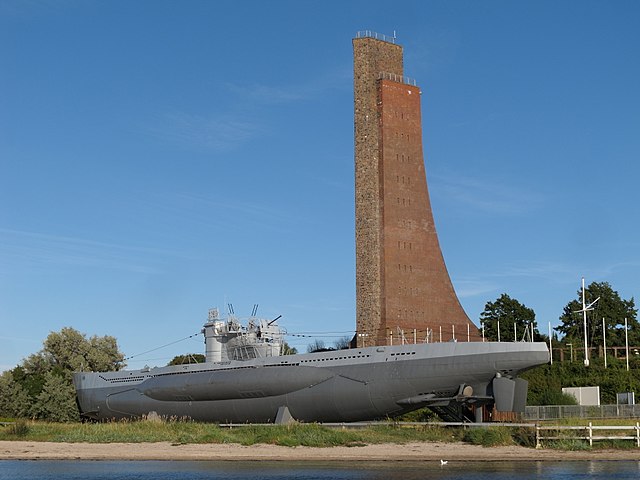
Memorial at Laboe, U-995. 4,744 submariners lost their lives in ww1, 30,002 during WW2, showing the extent of the Kriegsmarine’s commitment.
Epilogue & Stats
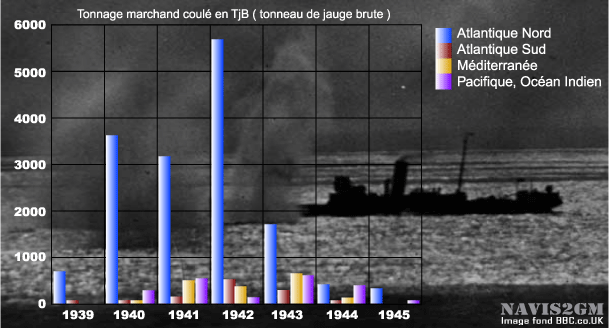
Home grown stats about ships losses in the battle of the Atlantic
In total, 23,000,000 tonnes of merchant shipping were sunk, 3,500 British ships, 2,000 allies and 1,000 neutrals. 45,000 sailors, including 30,248 British (about the same number of German crews), lost their lives there. The Germans deployed around 1000 U-Boats (out of 1150 built in service, and 1300 built or laid down before May 1945), and recorded 783 U-Boat losses, which represented 2/3 of the workforce engaged, as well as almost the entire surface fleet, with 28,000 dead.
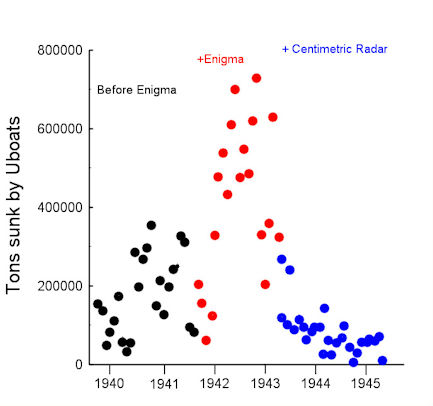
U-Boats losses (CC)
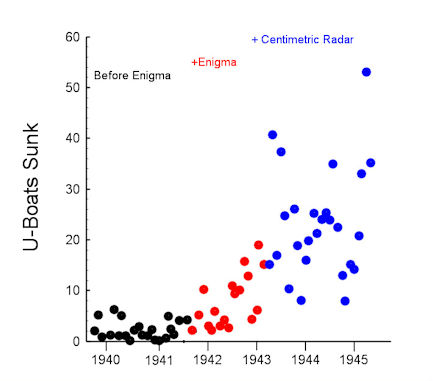
Merchant shipping losses (cc)
British losses & constructions
During ww2 nearly 1/3 of the world’s merchant shipping was under British flag and 30,000 men lost their lives onboard these until 1945, 2,400 British ships were sunk in all. Crews even comprised 1/4 of their men from India and China, 5% from the West Indies, Middle East and Africa. British merchant officers had the same uniforms as in the Royal Navy while sailors were given the ‘MN’ badge for “Merchant Navy”. The British merchant fleet went from many, often old private shipping lines. Most famous were tankers from the British Tanker Company, freighters from Ellerman and Silver Lines and British government’s Ministry of War Transport ordered many “Empire” ships.
US losses & constructions
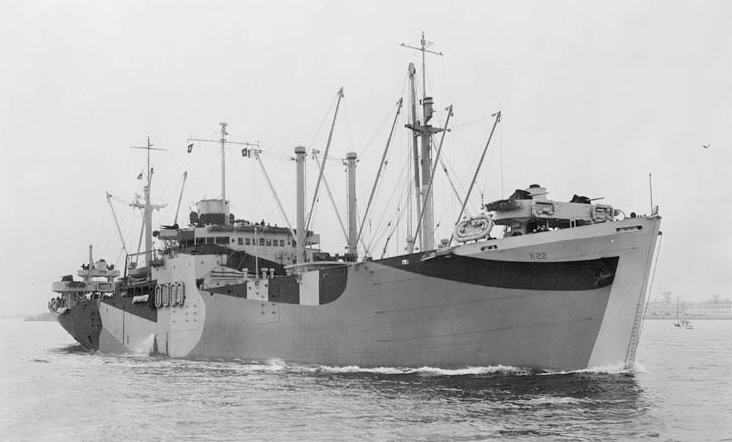
USS Folmalhaut, AK-22, a C1 type, often used as armed assault ship.
US merchant fleet was quite large, but it was more than double during the war, with home shipyards cranking up some 2,710 Liberty ships (38.5 million GRT), compensating for the 14 million tons sank by U-boats during the war.
Canadian losses & constructions
Its Merchant Navy was also important and 70 merchant vessels were lost during the war, 1,600 sailors lost. Canada even conscripted all its merchant vessels two weeks before the war and by Aigust 1939, all shipping was requisitioned and placed under control of the Royal Canadian Navy. At that date, only 38 ocean-going merchant vessels were available, but thanks to local construction, in 1945 some 400 cargo ships served under Canadian flag. Losses were more apparent from the summer of 1942, when the US started to organized their security measures along British lines and the “American adventure” of German long range U-boats started to fade away, U-boats entered the Gulf of St. Lawrence. but they will operate from the Caribbean to Halifax until 1945. At the end of the war, Rear Admiral Leonard Murray, C-in-C Canadian North Atlantic said that “…the Battle of the Atlantic was not won by any Navy or Air Force, it was won by the courage, fortitude and determination of the British and Allied Merchant Navy.”
Norwegian fleet & losses
It could surprise, but Norway’s Merchant Navy was the world’s fourth in 1939, and many of its ships were modern. Following Germany’s invasion of Norway in April 1940, both the latter and the allies competed to seize as many as this merchant fleet they could. Vidkun Quisling however soon ordered all Norwegian ships away from home to sail to axis or neutral ports but was ignored. In fact the immense majority of these would serve with the Allies, placed under the control of the government-run Nortraship headquartered in London and New York. Its tankers fleet was highly valuable, carrying almost 1/3 of all the oil carried to UK Britain during ww2. 694 Norwegian ships were sunk, 47% of the total allied fleet (3,700 Norwegian seamen lost). But thanks to many transfers, by the end of hostilities the Norwegian merchant fleet was still 1,378 ships strong.
Conclusion and lessons for the cold war

The German Type XXI was the main inspiration for post-war era conventional attack submarines. Stalin’s era “Whiskey types” were based on its technology and numerous enough to enter NATO planners considerations.
The battle of the Atlantic had a profound impact on naval planners after WW2. Suffice to say that in 1942, Germany was close to win its bet, of strangulating British trade, crucially with the US, now its main supplier for military hardware; The considerable industrial effort of building more than a thousand submersibles at a time all the war effort was already focused on winning over a continent, USSR, was still no match.
They would not face at the same time the industrial capabilities of the British Empire and commonwealth (that includes Canada) and the United States, and the combined crews of the allies, including of ‘Free Navies’, which albeit few in numbers, had an inflexible determination.
With four years to perfect ASW warfare, technology developed rapidly on both sides, with the hedgehog soon rendered obsolete with the latest Type XXI. Convoy escort was moderately successful, but aviation proved very efficient, and of course radar, and intelligence through computing proved a war-winning asset.
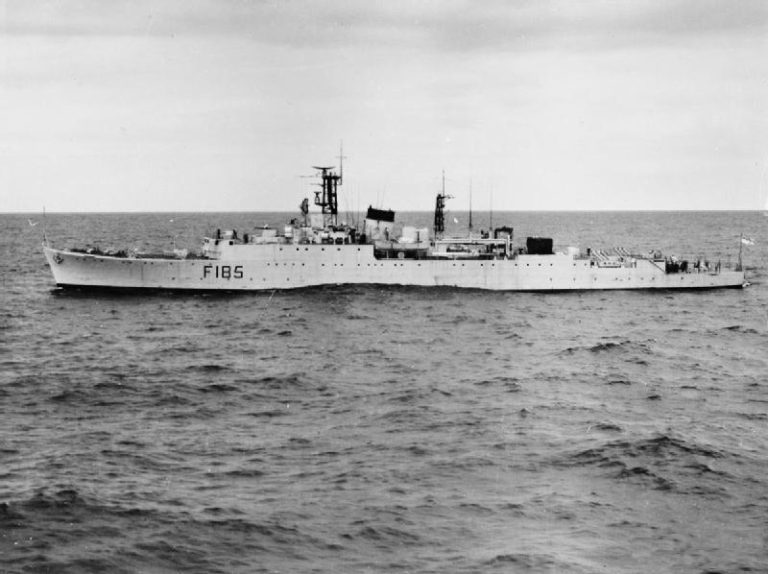
Both the USN and Royal Navy converted their masses of WW2-era destroyers to answer the 1950-80 Soviet submarine threat.
With the new context of the cold war, NATO planners prepared for a possible “second Atlantic battle”. The context was different however, as the USSR did not controlled ports on the Atlantic, but only could access it through narrow passages: The north route from Murmansk, bases at Severomorsk and Polyarnyy, the “royal road” for SSBNs and SSNs trying to reach the US coast, and the far more risky passage of the Baltic. The Bundesmarine was no match for the Baltic fleet, but minefields and submarines had a substantial nuisance capability, whereas neutral Sweden was likely to block the Skagerrak and fight furiously of threatened. Nevertheless, the new nature of modern submarines meant during the cold war, a substantial naval strategy developed around the GIUK line, as underwater capabilities of subs and cartographic details about the bottom were known by both sides.
Until the nuclear age, from 1960 where the first SSBNs appeared, NATO planners geared their fleets to face Stalin’s era mass-produced diesel-electric subs derived from the German Type XXI, notably the prolific “Whiskey” type, which was able to defeat traditional escorts and weaponry. The Royal Navy therefore maintained for at least ten more years a substantial part of her numerous WW2 escort vessels, notably the valuable River class Frigates, and converted many destroyers into fast ASW frigates, a cheap way to develop rapidly a fast ASW force. The US did the same and pushed the enveloped to face the new generation of nuclear attack submarines, with mass-produced Frigates and converted destroyers of WW2 (FRAM-I/II). Soviet planners on their side planned to eliminate first the aircraft-carrier task forces before taking on less valuable targets, and long before even thinking of commerce raiding.
However, the nuisance capability of Soviet submarines was always reduced due to the location of their bases, and the only real threat was linked to a success on land, the ‘Seven Days to the River Rhine’ scenario, where a massive, overwhelming Soviet land force was aimed at taking western Europe, mater securing valuable ports on the Atlantic as Nazi Germany did. But it was considered a tributary scenario of the land battle, therefore NATO never really planned in detail about it.

Soviet November class SSN, which speed was a surprise for NATO planners in 1960
There was one interesting technological venture though, with nuclear propulsion for civilian ships, such as the NS Savannah in 1961. On of the thoughts was to provide cargo ships with the capability of out-run the fastest nuclear submarines of needed. Of course this fell apart with the revelation of the Soviet Alfa class (1961), were fast beyond the realm of anything NATO planners envisioned (40+ knots underwater speed). Little they knew the very complex propulsion system was both costly and fragile and the Alfa class was limited to only eight boat during the cold war. The November class earlier also gave shivers to NATO planners, but they were rushed into service in such way accidents made them the infamous “widow makers” of the navy. On the other hand, NATO bases of long-range turboprop dedicated ASW patrol aircraft were supposed to give some cover in the Atlantic in all areas.
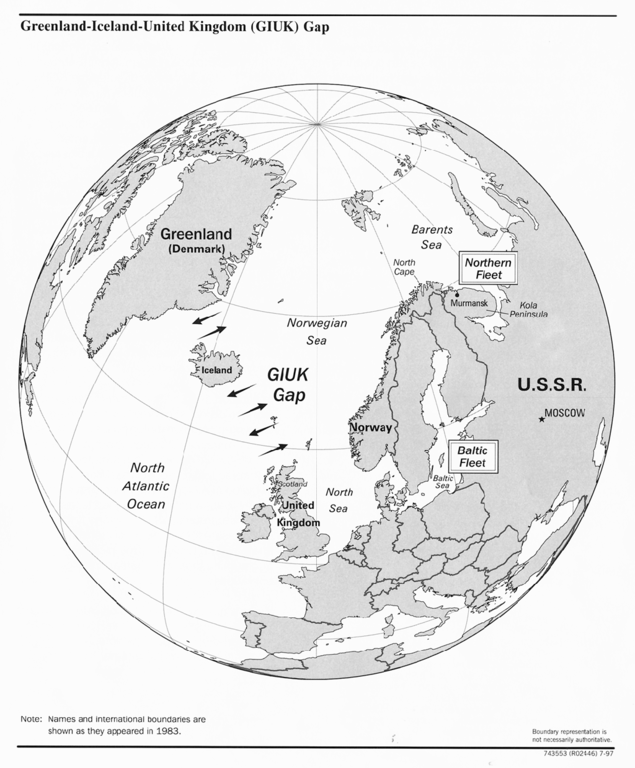
The GIUK gap, possible entrance ways in the Atlantic by Soviet subs.
Exercise Strikeback
A major NATO naval exercise held in 1957 to simulate a response over a Soviet attack with over 200 warships covered by 650 aircraft. it was the largest peacetime naval operation by then, called by military analyst Hanson W. Baldwin (NY Times) as “the strongest striking fleet assembled since World War II”.
Exercise Reforger
Certainly better known for its ground component, if activated, the naval component of the plan consisted of convoys (Operation Earnest, 1987) at a way much larger scale. But it was realized at that time troops could easily fly across the Atlantic. However tanks and heavy equipments reinforcements had to come by sea.
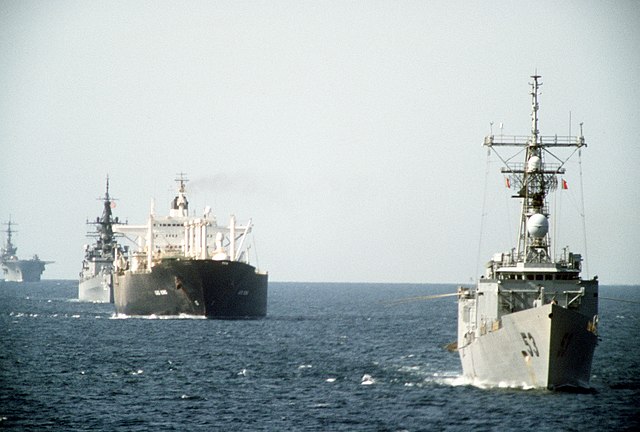
USN ships escorting a tanker in the Persian gulf in 1987, a possible illustration of WW-III convoys in the Atlantic.
Reforger (“Return of Forces to Germany”) was an annual exercise ensuring the ability to quickly deploy forces to West Germany. The Warsaw Pact outnumbered NATO conventional forces, notably with tanks and therefore outside tactical nuclear strikes, NATO ‘holding the line’ success depended largely of being resupplied and replaced and the support would have come across the Atlantic. Therefore naval exercises playing at various scenarios of Soviet SSNs attacks on convoy routes were planned. The plan also comprised the Military Airlift Command, and notably Sealift Command, and Civil Reserve Air Fleet. Heavy lifters such as the C-5 Galaxy (1970) was able to carry a limited number of medium armour (like five Bradley Fighting Vehicles), realizing the dream of Howard Hugues of carrying armour and troops with his “spruce goose” during WW2.
So in short, an eventual “third battle of the Atlantic” was conditioned to the Soviet land force winning in Western Europe and also at sea against task forces, while NATO geared towards controlling access to the Atlantic via a few well known passages (GIUK). With advances of technology, better surveillance, and given the gap between the Soviet Navy and NATO naval forces which never flinched on their ASW warfare policy, giving it them an edge in case of war, the repeated war on trade in such large scale was unlikely to ever happen again.

Garcia class frigate of the 1960s. To answer the Soviet sub threat in the Pacific, the JSDNF also produced a variety of impressive ASW vessels.
Read More
en.wikipedia.org/wiki/Battle_of_the_Atlantic
https://en.wikipedia.org/wiki/Liberty_ship
http://usmaritimecommission.de/
https://en.wikipedia.org/wiki/United_States_Maritime_Commission
/www.usmm.org/battleatlantic.html
www.britannica.com/event/Battle-of-the-Atlantic
https://en.wikipedia.org/wiki/War_Shipping_Administration
https://en.wikipedia.org/wiki/Empire_ship
https://en.wikipedia.org/wiki/Victory_ship
https://en.wikipedia.org/wiki/Ministry_of_War_Transport
www.veterans.gc.ca/eng/remembrance/information-for/educators/quick-facts/battle-atlantic
//en.wikipedia.org/wiki/World_War_III
//en.wikipedia.org/wiki/RAF_Coastal_Command
//en.wikipedia.org/wiki/Seven_Days_to_the_River_Rhine
//commons.wikimedia.org/wiki/Category:World_War_II_on_the_Atlantic_Ocean

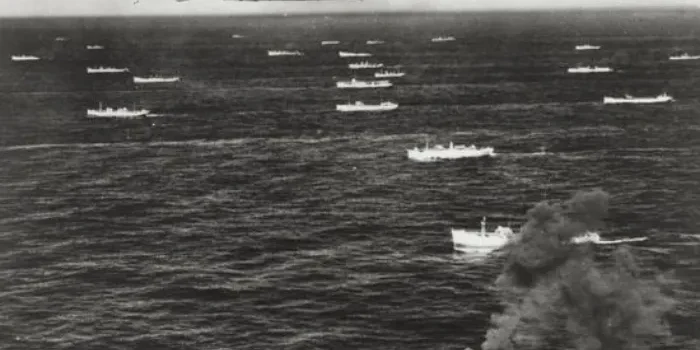
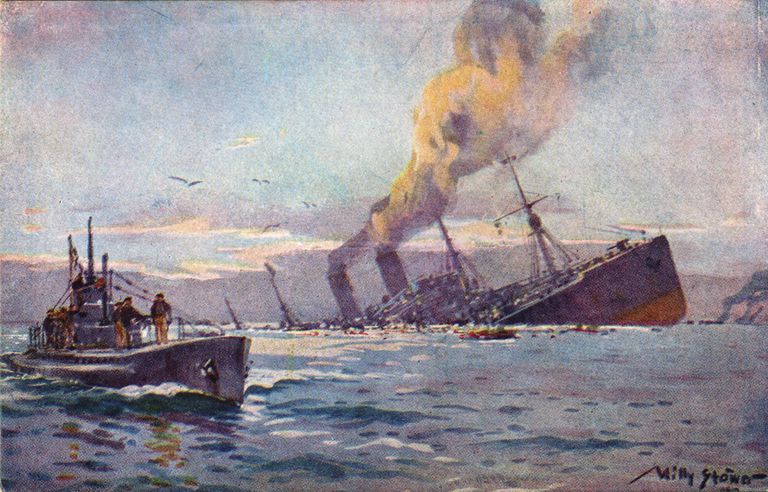
 Latest Facebook Entry -
Latest Facebook Entry -  X(Tweeter) Naval Encyclopedia's deck archive
X(Tweeter) Naval Encyclopedia's deck archive Instagram (@navalencyc)
Instagram (@navalencyc)





 French Navy
French Navy Royal Navy
Royal Navy Russian Navy
Russian Navy Armada Espanola
Armada Espanola Austrian Navy
Austrian Navy K.u.K. Kriegsmarine
K.u.K. Kriegsmarine Dansk Marine
Dansk Marine Nautiko Hellenon
Nautiko Hellenon Koninklije Marine 1870
Koninklije Marine 1870 Marinha do Brasil
Marinha do Brasil Osmanlı Donanması
Osmanlı Donanması Marina Do Peru
Marina Do Peru Marinha do Portugal
Marinha do Portugal Regia Marina 1870
Regia Marina 1870 Nihhon Kaigun 1870
Nihhon Kaigun 1870 Preußische Marine 1870
Preußische Marine 1870 Russkiy Flot 1870
Russkiy Flot 1870 Svenska marinen
Svenska marinen Søværnet
Søværnet Union Navy
Union Navy Confederate Navy
Confederate Navy Armada de Argentina
Armada de Argentina Imperial Chinese Navy
Imperial Chinese Navy Marinha do Portugal
Marinha do Portugal Mexico
Mexico Kaiserliche Marine
Kaiserliche Marine 1898 US Navy
1898 US Navy Sovietskiy Flot
Sovietskiy Flot Royal Canadian Navy
Royal Canadian Navy Royal Australian Navy
Royal Australian Navy RNZN Fleet
RNZN Fleet Chinese Navy 1937
Chinese Navy 1937 Kriegsmarine
Kriegsmarine Chilean Navy
Chilean Navy Danish Navy
Danish Navy Finnish Navy
Finnish Navy Hellenic Navy
Hellenic Navy Polish Navy
Polish Navy Romanian Navy
Romanian Navy Turkish Navy
Turkish Navy Royal Yugoslav Navy
Royal Yugoslav Navy Royal Thai Navy
Royal Thai Navy Minor Navies
Minor Navies Albania
Albania Austria
Austria Belgium
Belgium Columbia
Columbia Costa Rica
Costa Rica Cuba
Cuba Czechoslovakia
Czechoslovakia Dominican Republic
Dominican Republic Haiti
Haiti Hungary
Hungary Honduras
Honduras Estonia
Estonia Iceland
Iceland Eire
Eire Equador
Equador Iran
Iran Iraq
Iraq Latvia
Latvia Liberia
Liberia Lithuania
Lithuania Mandchukuo
Mandchukuo Morocco
Morocco Nicaragua
Nicaragua Persia
Persia San Salvador
San Salvador Sarawak
Sarawak Uruguay
Uruguay Venezuela
Venezuela Zanzibar
Zanzibar Warsaw Pact Navies
Warsaw Pact Navies Bulgaria
Bulgaria Hungary
Hungary

 Bundesmarine
Bundesmarine Dutch Navy
Dutch Navy Hellenic Navy
Hellenic Navy Marina Militare
Marina Militare Yugoslav Navy
Yugoslav Navy Chinese Navy
Chinese Navy Indian Navy
Indian Navy Indonesian Navy
Indonesian Navy JMSDF
JMSDF North Korean Navy
North Korean Navy Pakistani Navy
Pakistani Navy Philippines Navy
Philippines Navy ROKN
ROKN Rep. of Singapore Navy
Rep. of Singapore Navy Taiwanese Navy
Taiwanese Navy IDF Navy
IDF Navy Saudi Navy
Saudi Navy Royal New Zealand Navy
Royal New Zealand Navy Egyptian Navy
Egyptian Navy South African Navy
South African Navy






























 Ukrainian Navy
Ukrainian Navy dbodesign
dbodesign